Organic Chemistry Aromatic Compounds 22 Arenes :


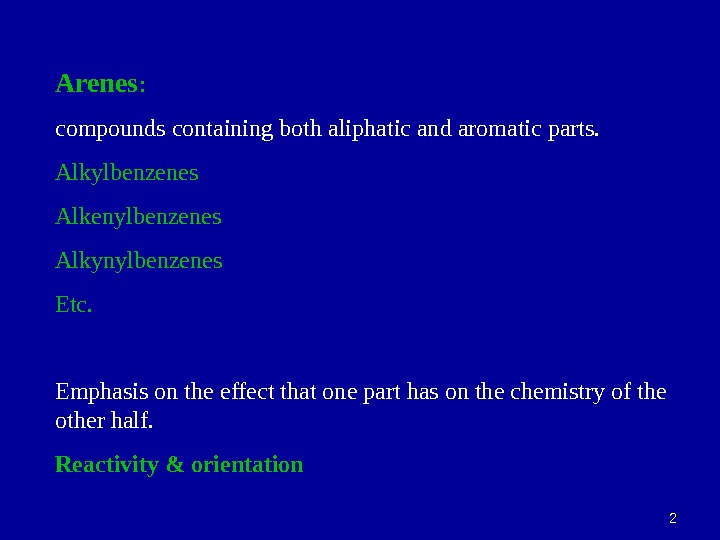
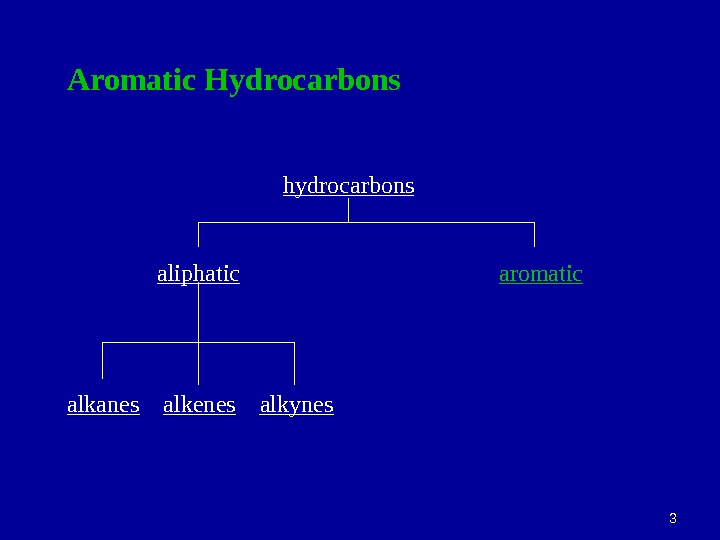
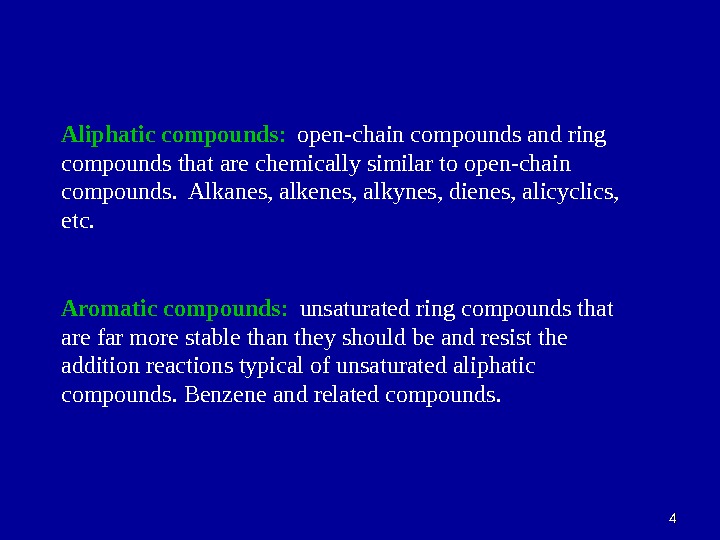
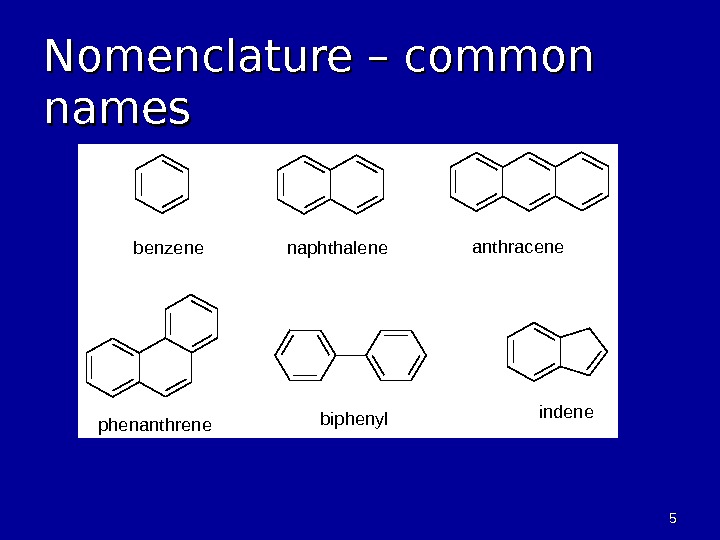
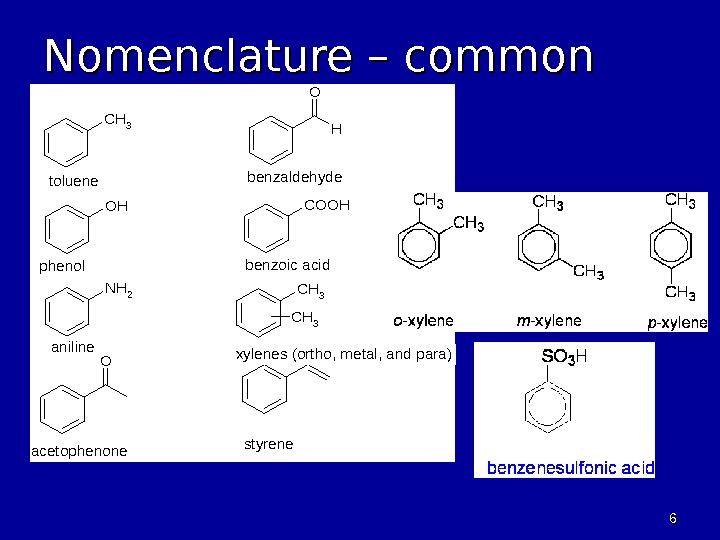
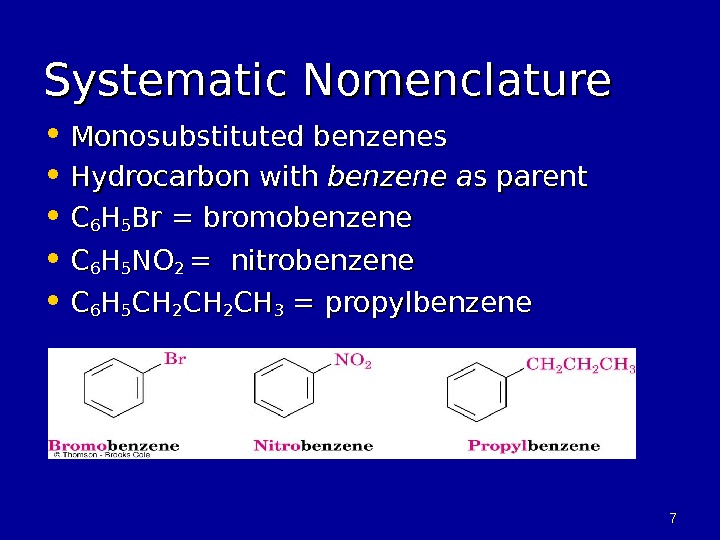
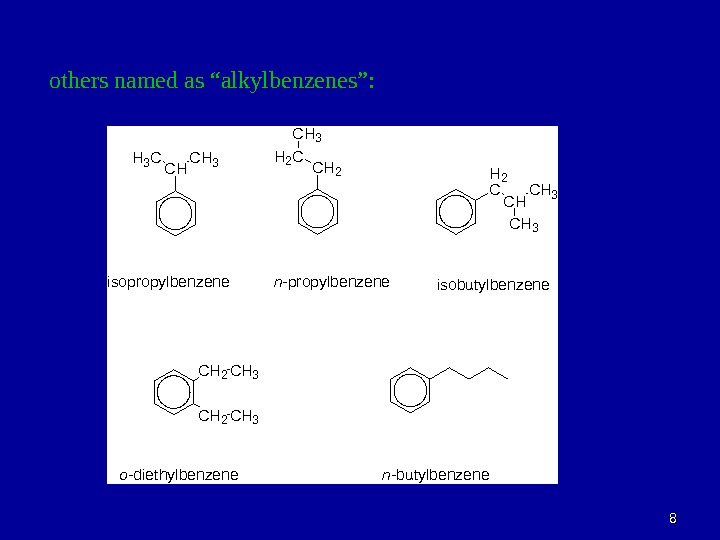
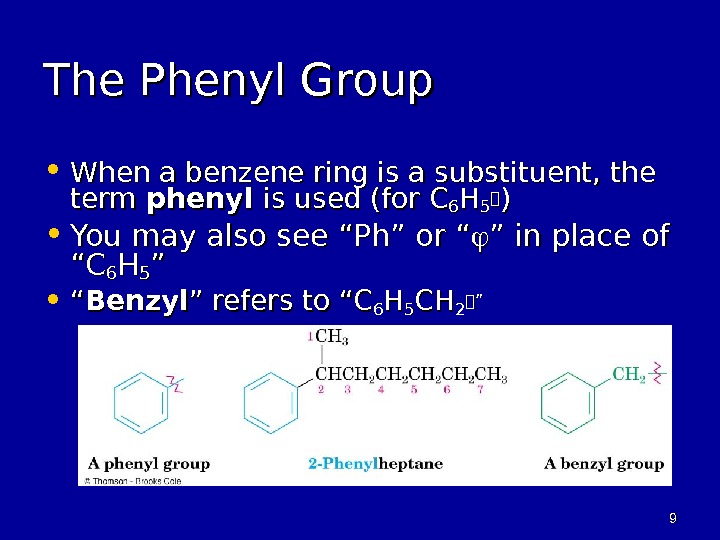
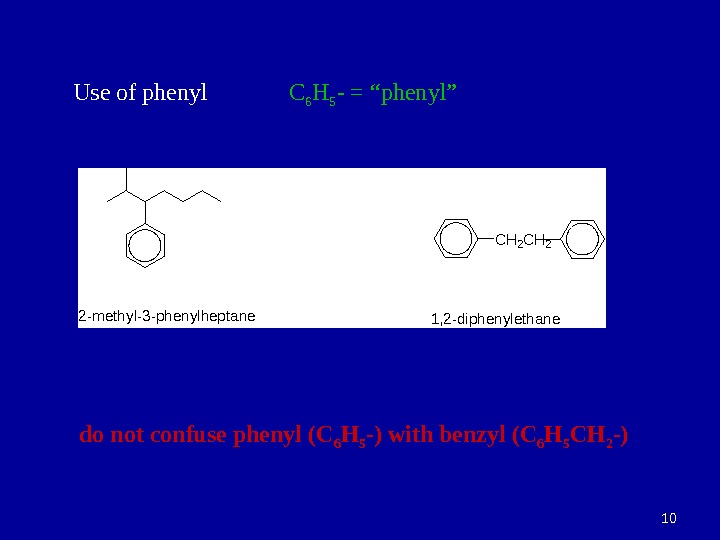
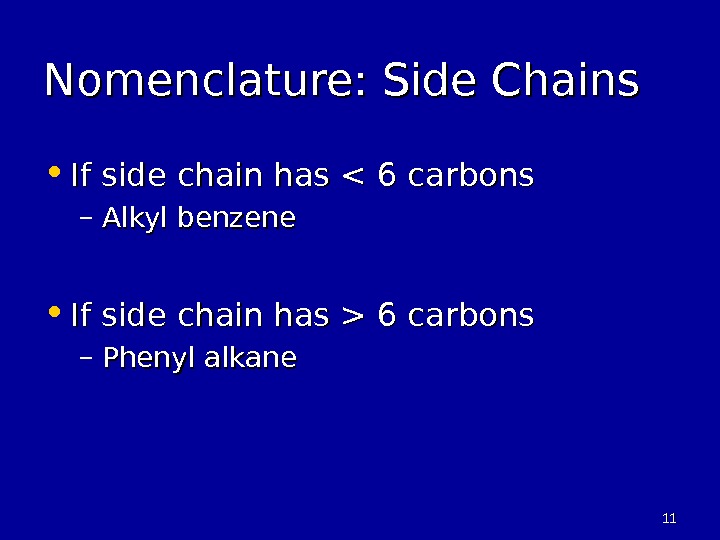
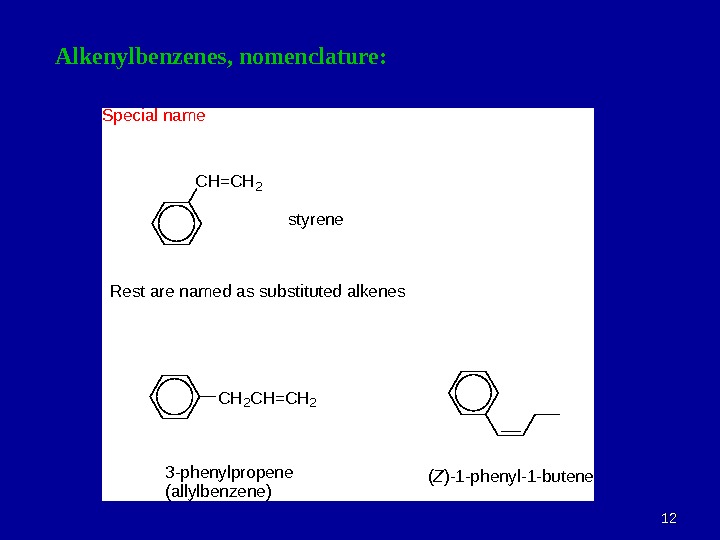

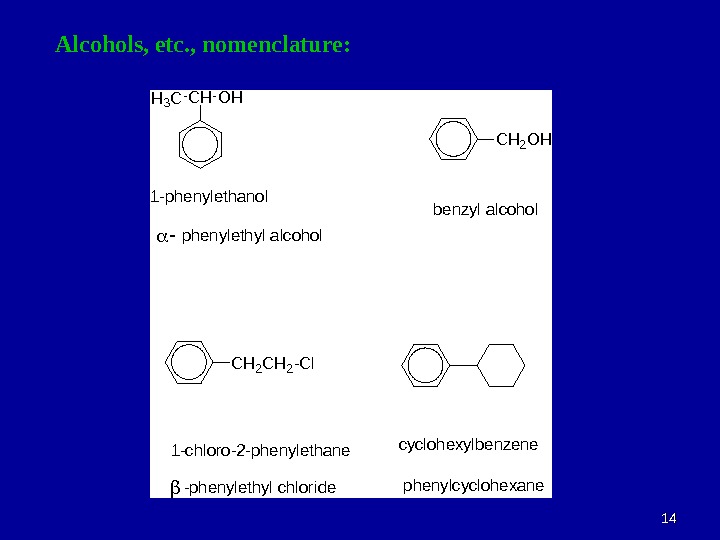
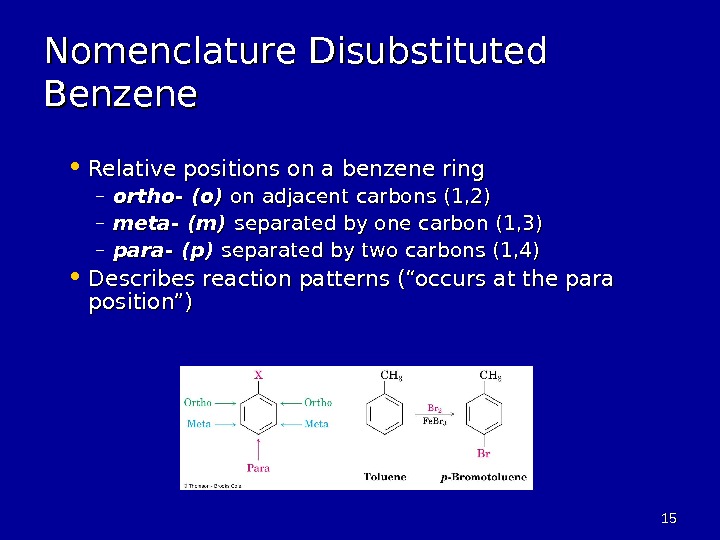
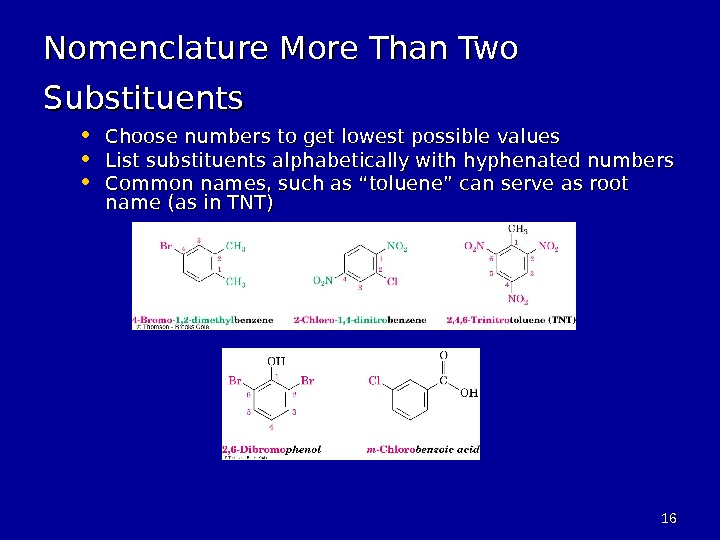
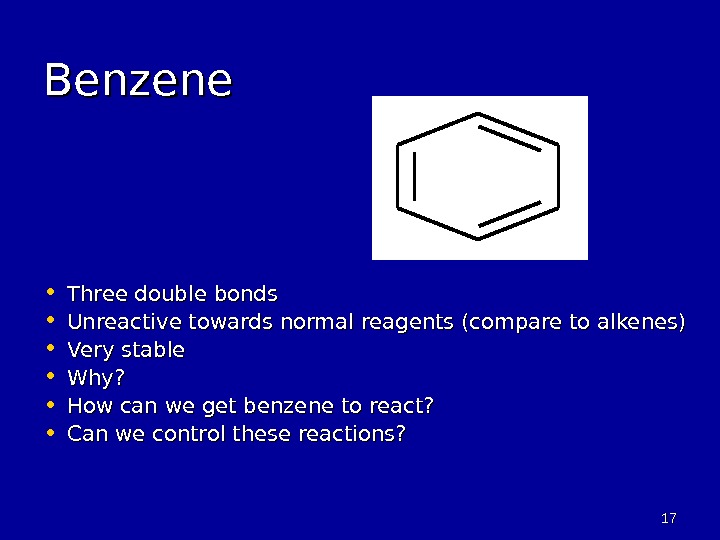
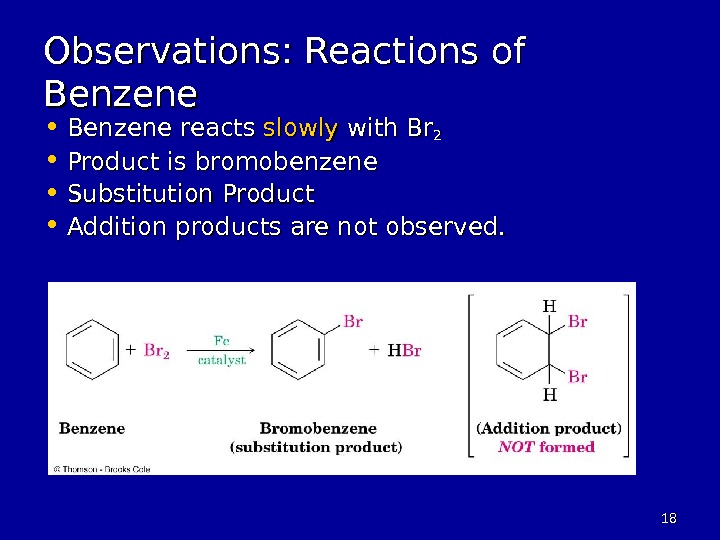
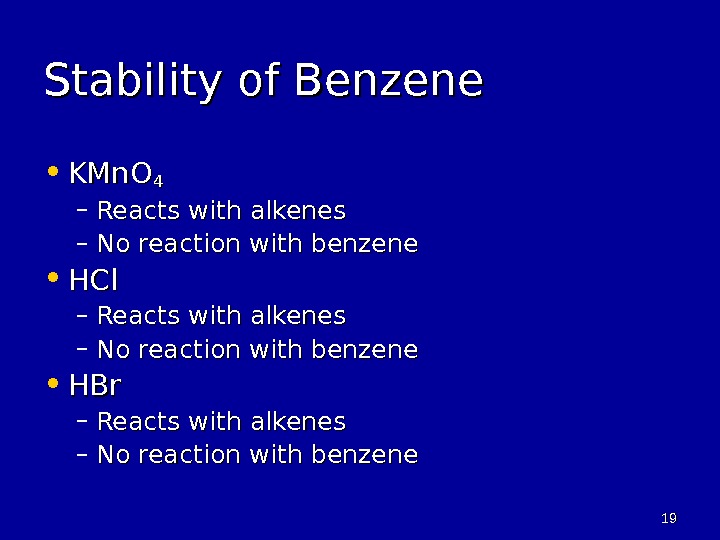
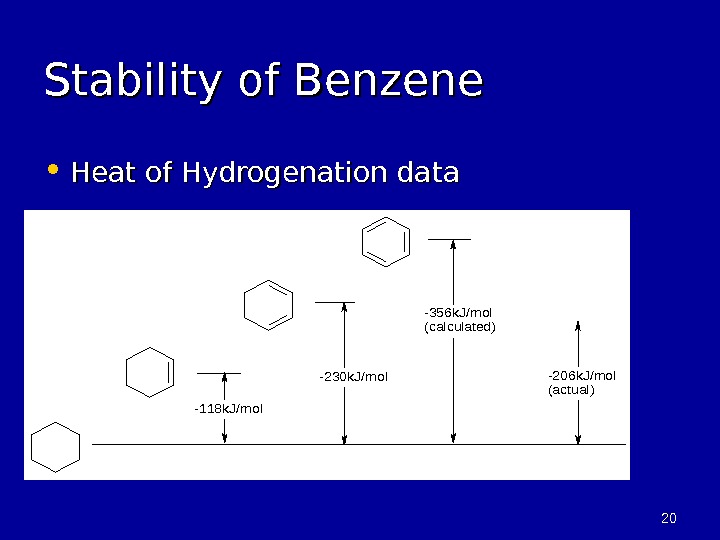
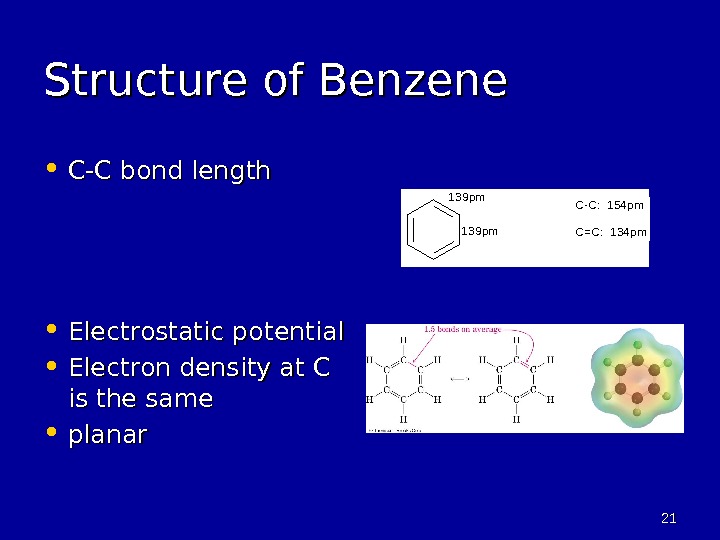
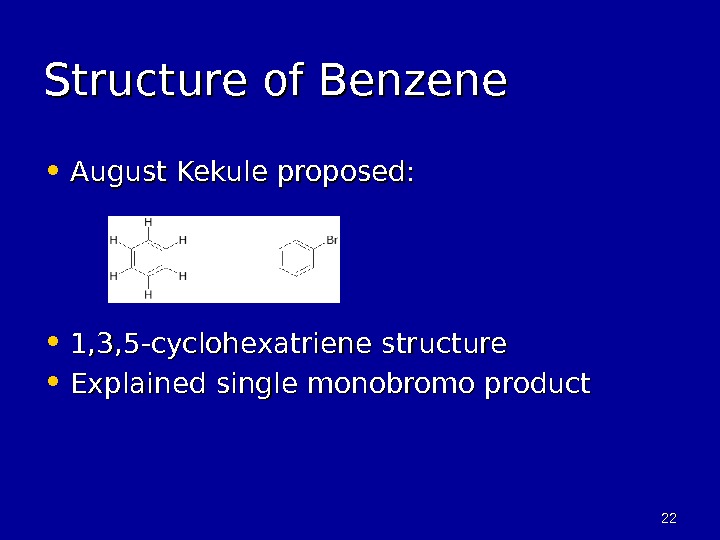

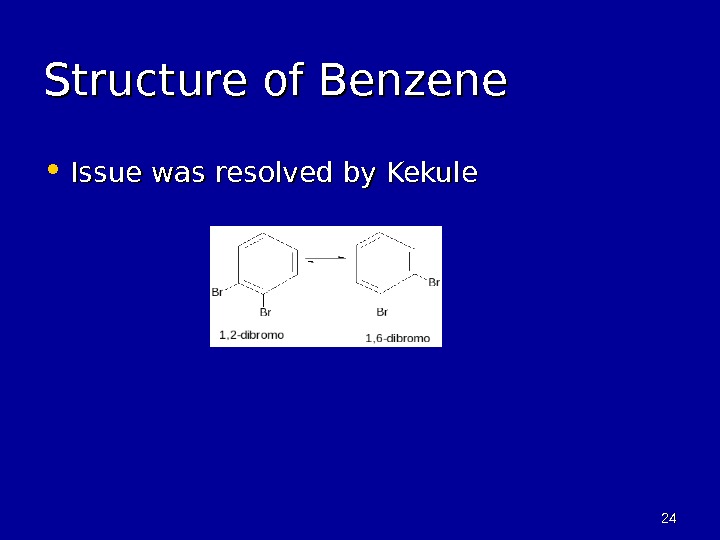
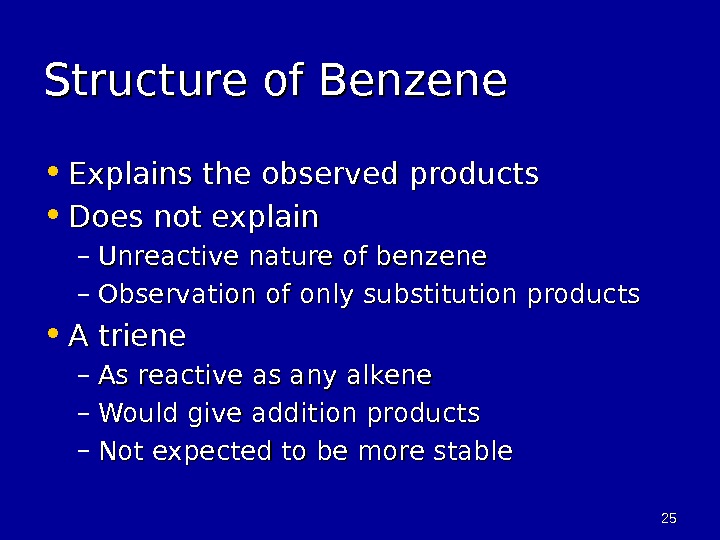

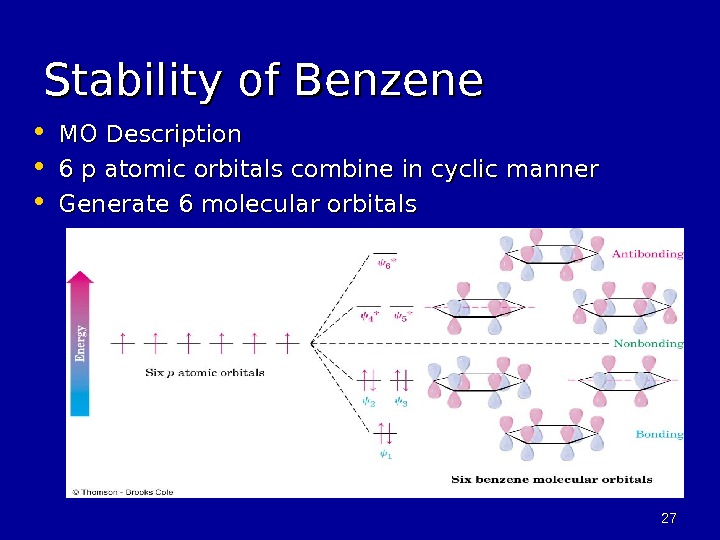
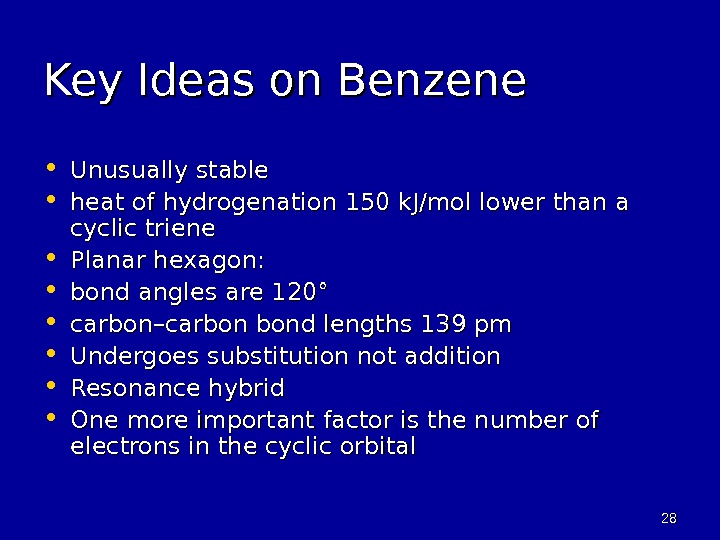
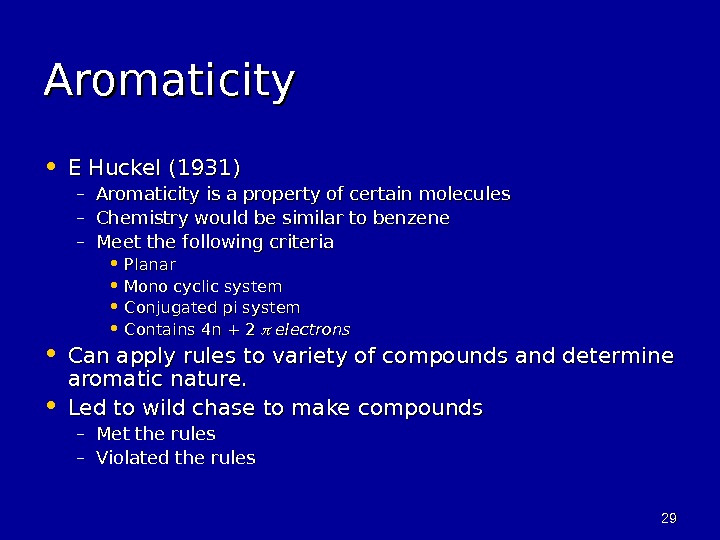


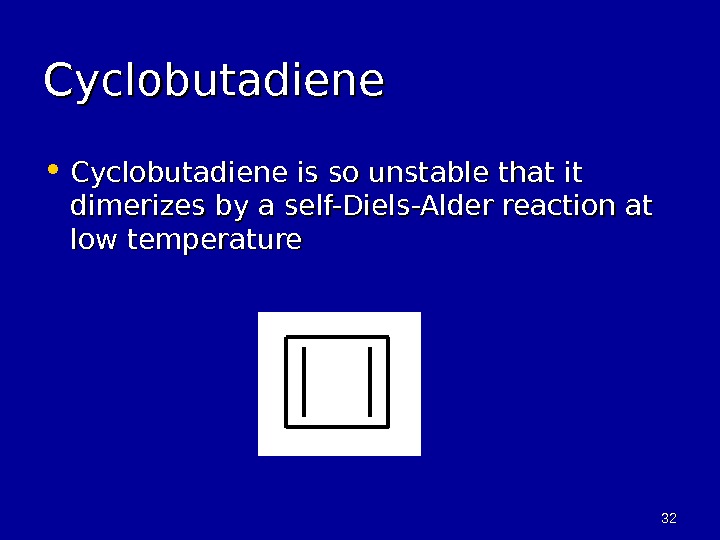
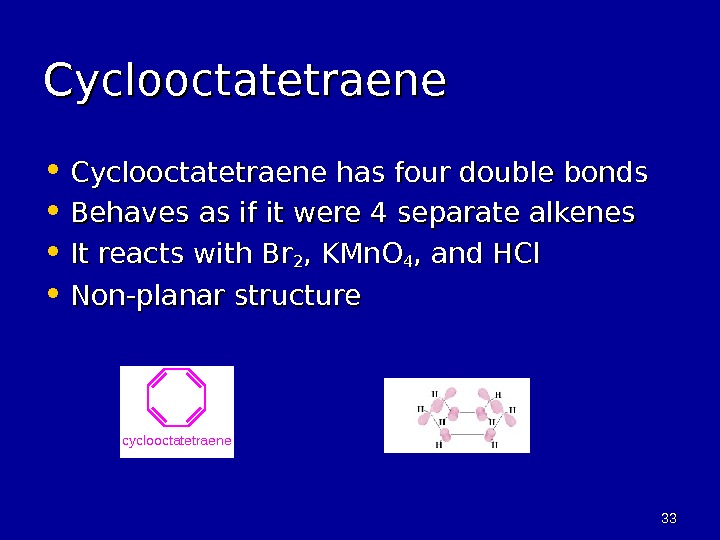

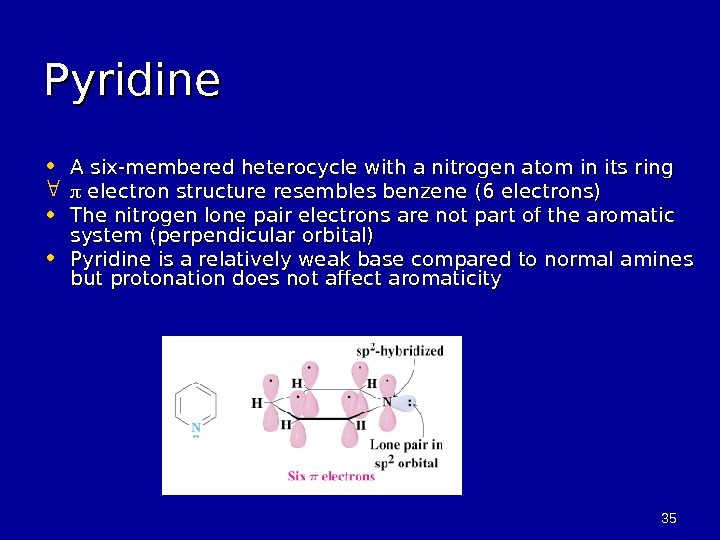
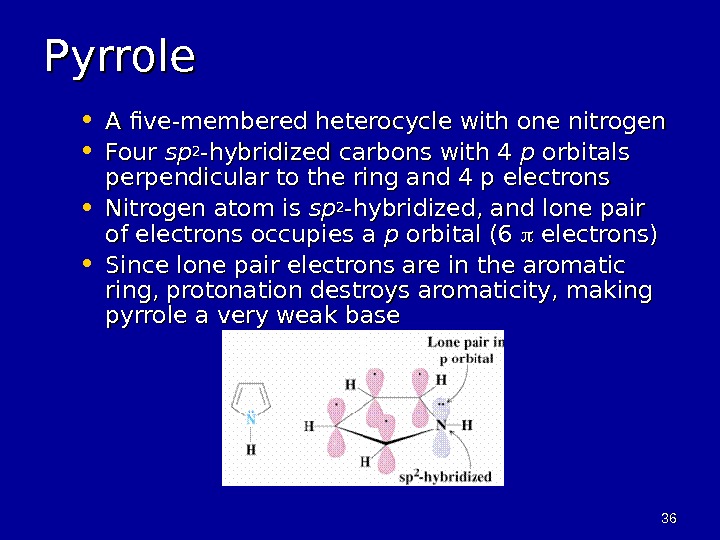
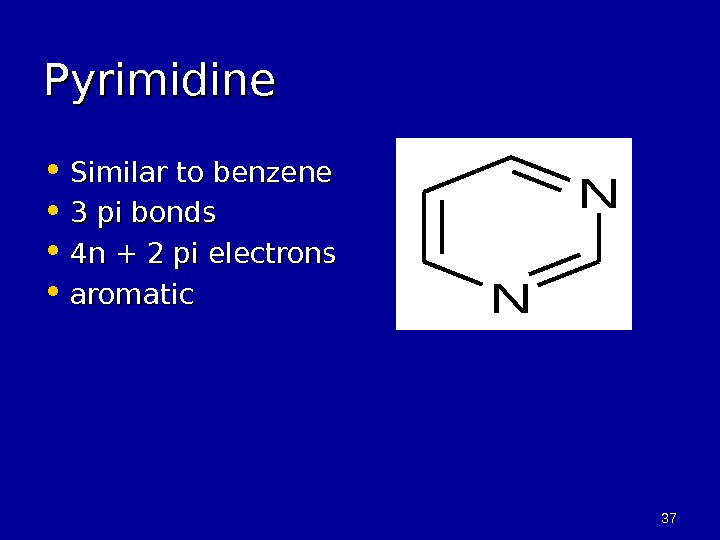
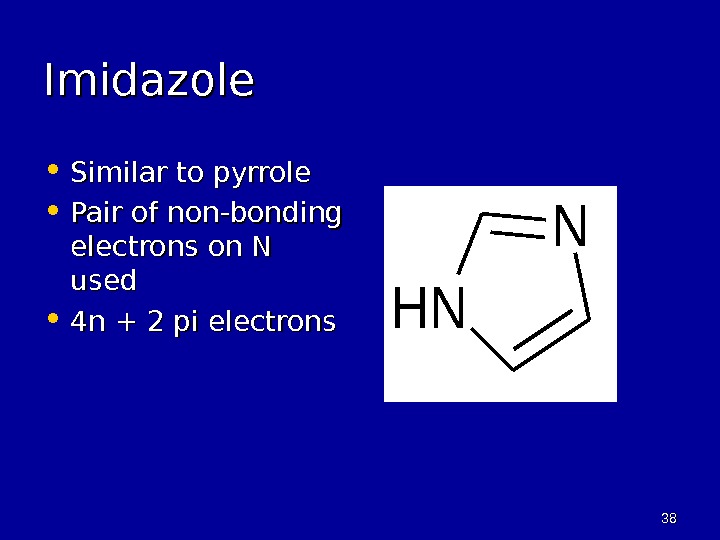
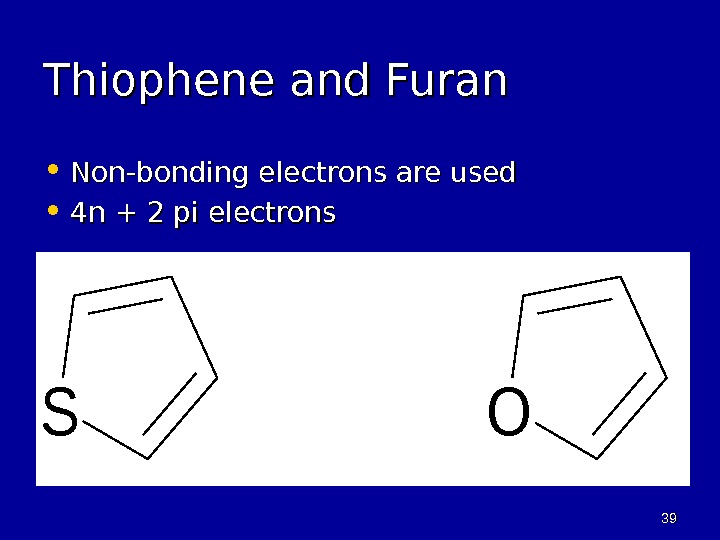
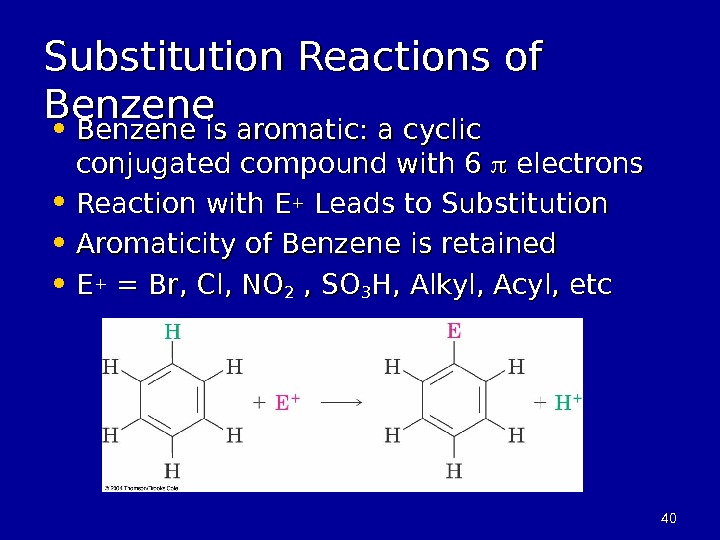
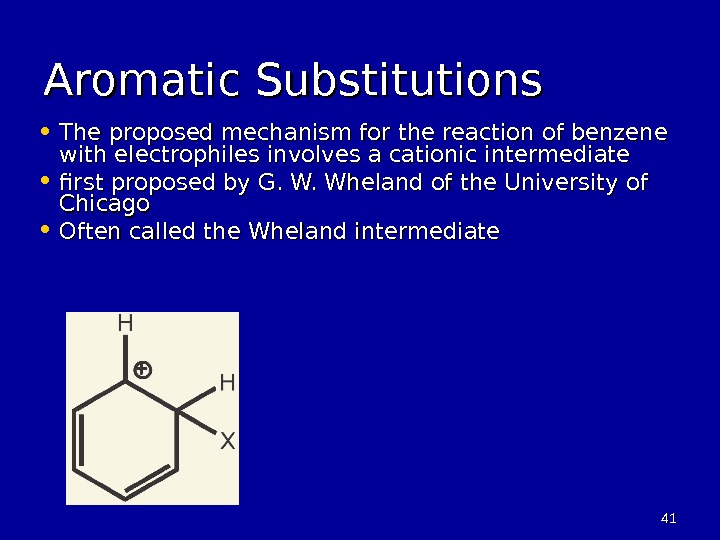
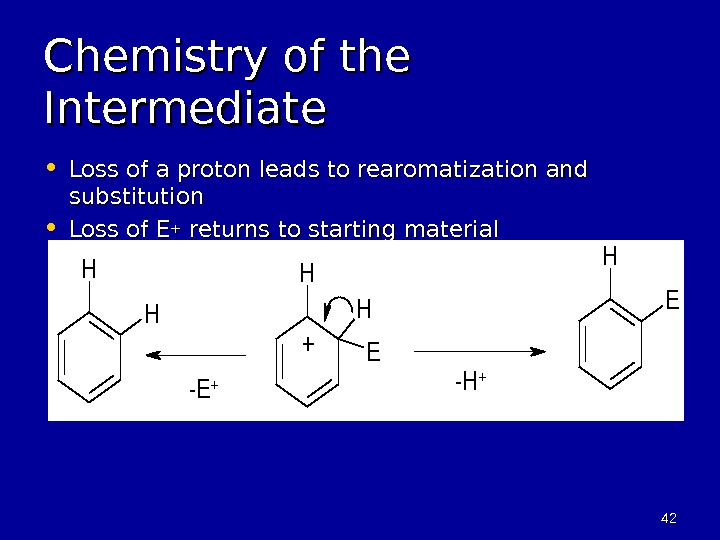
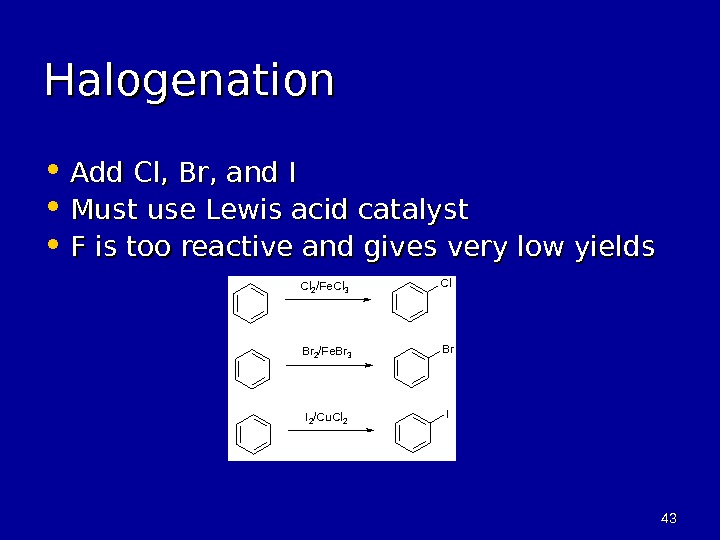
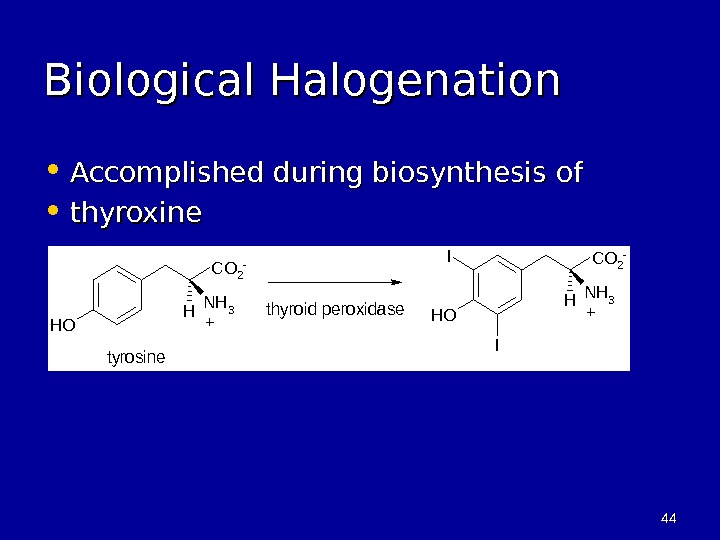

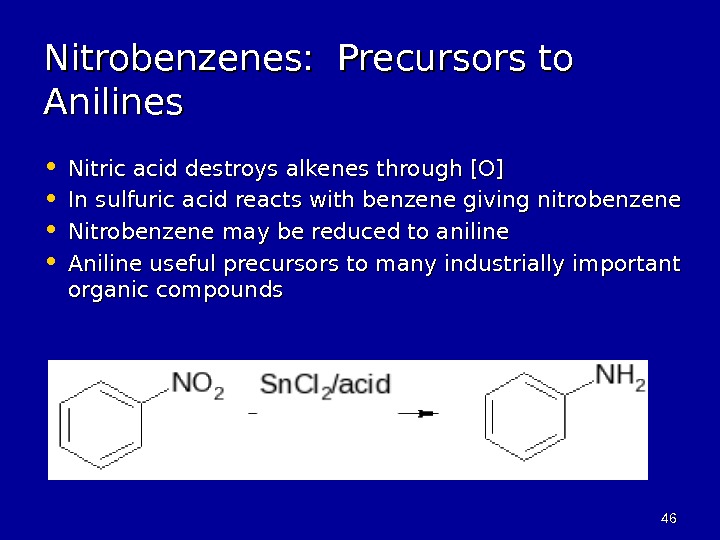
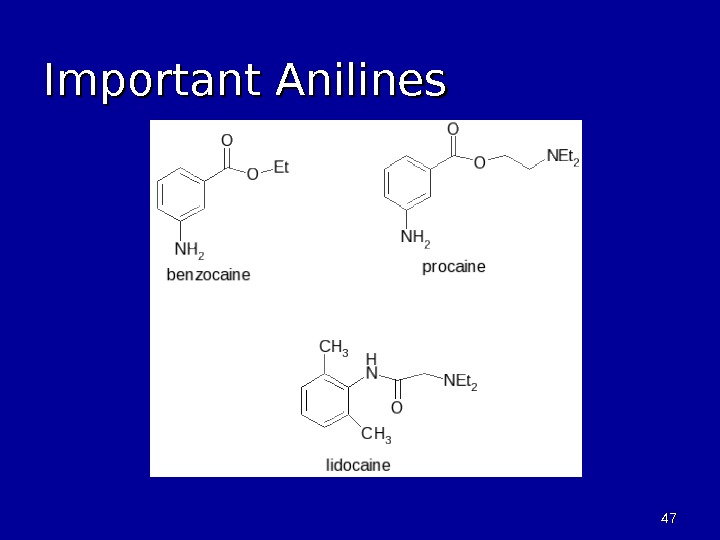

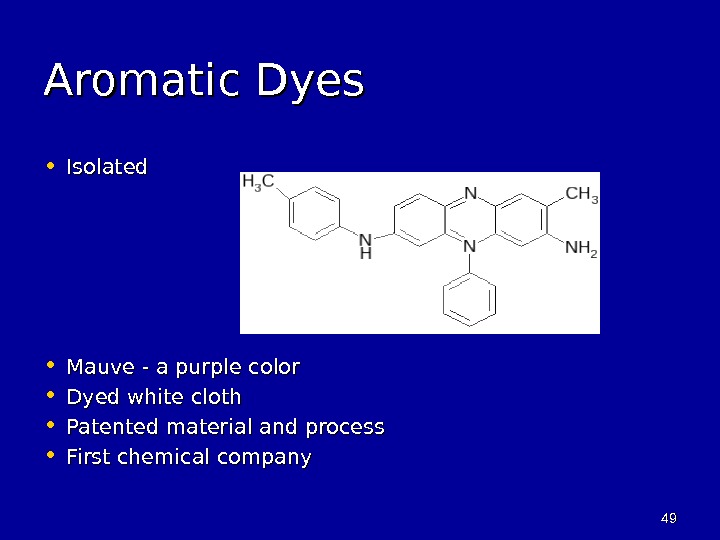
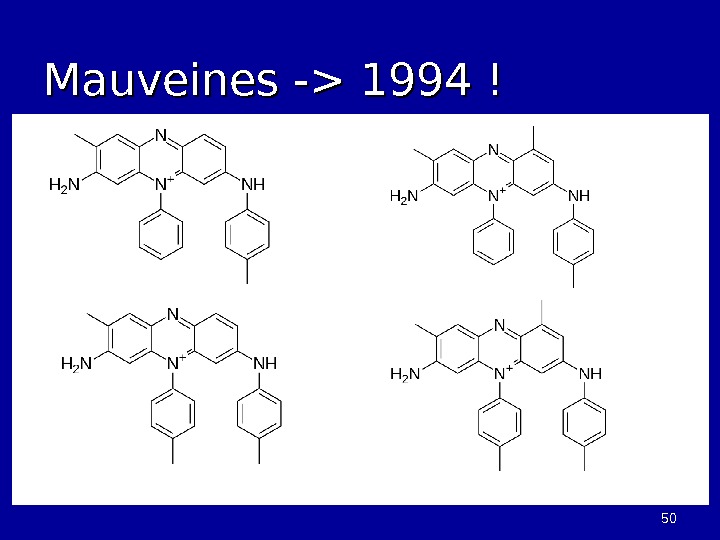
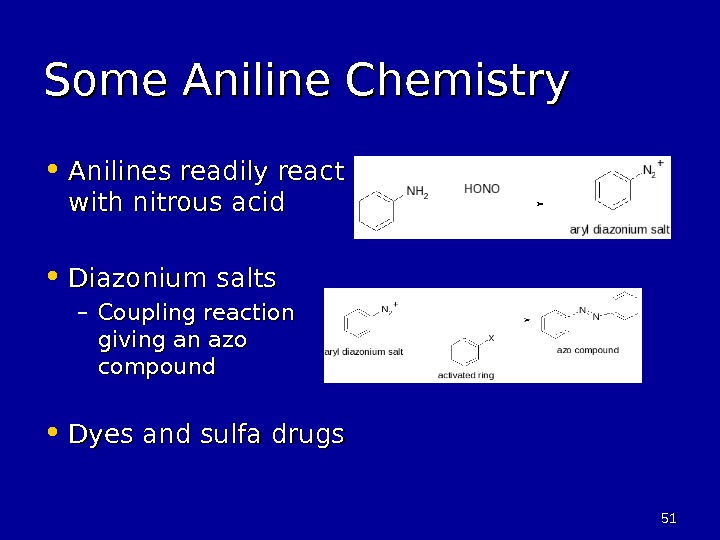
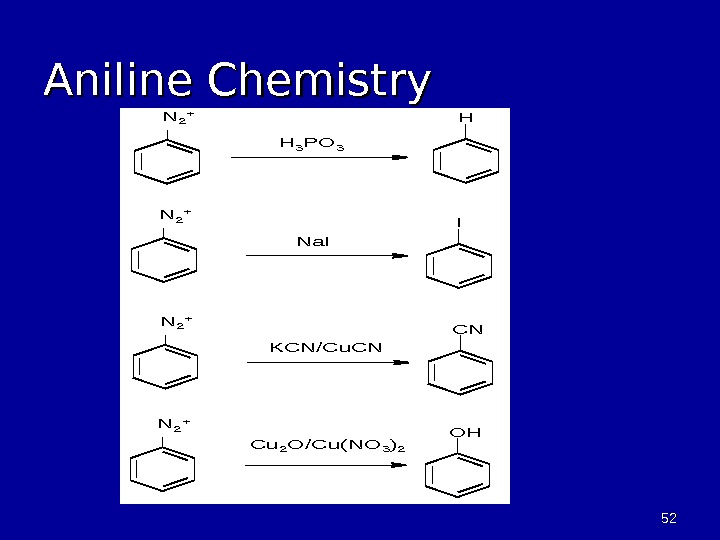
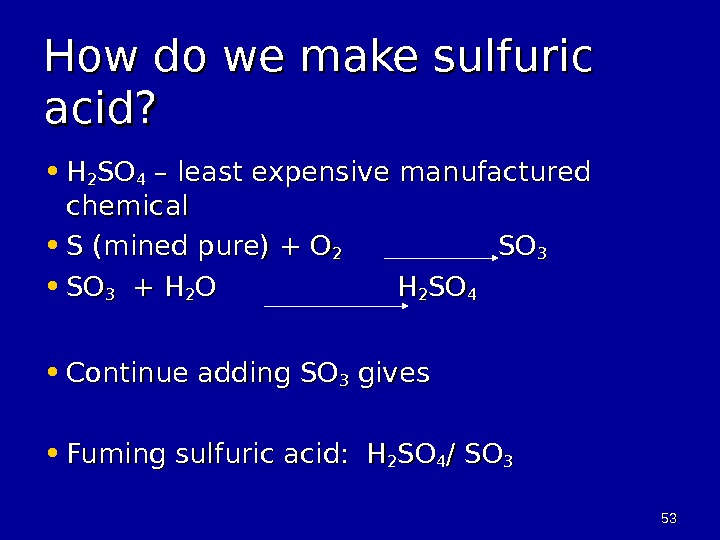
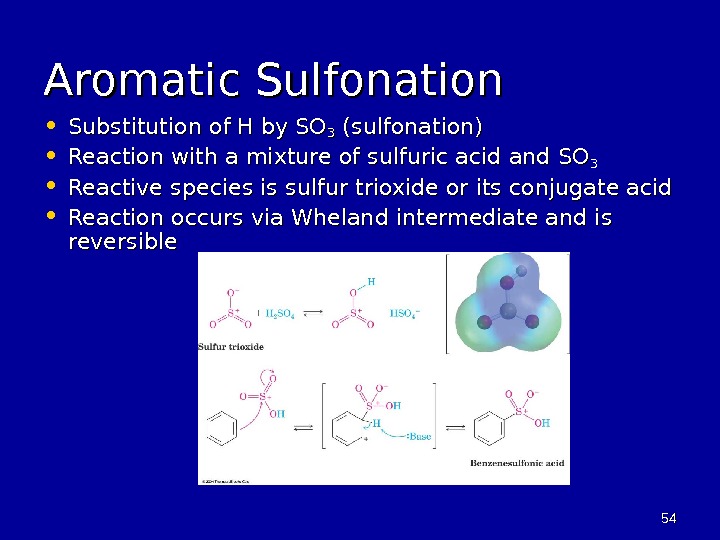
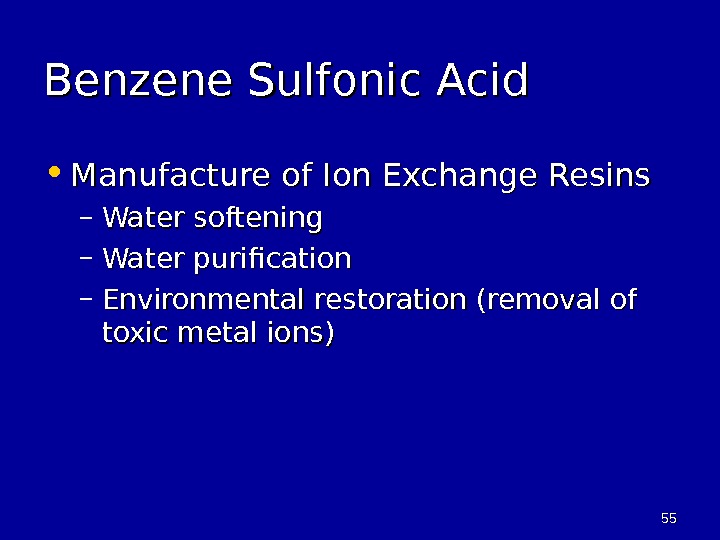
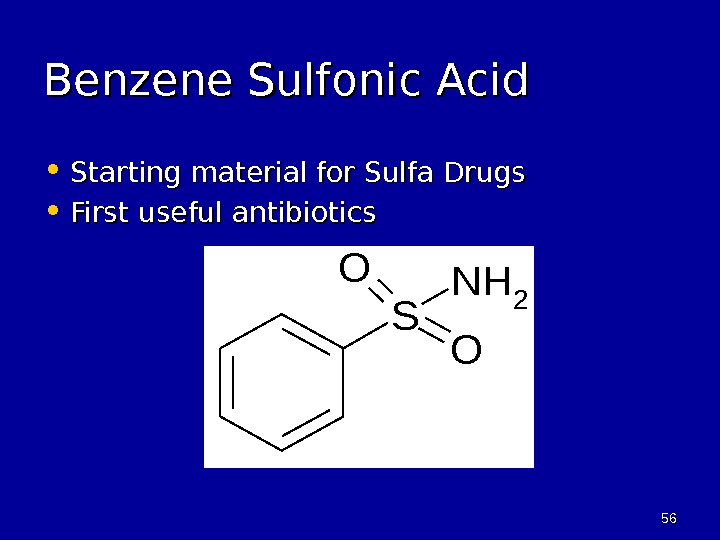
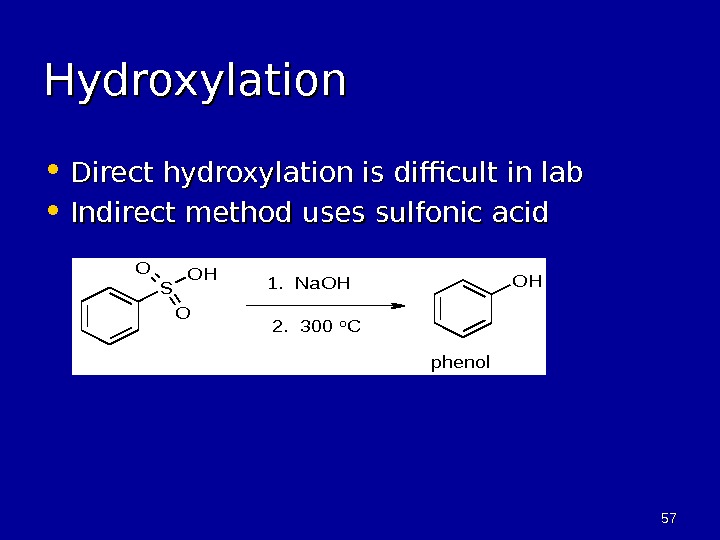
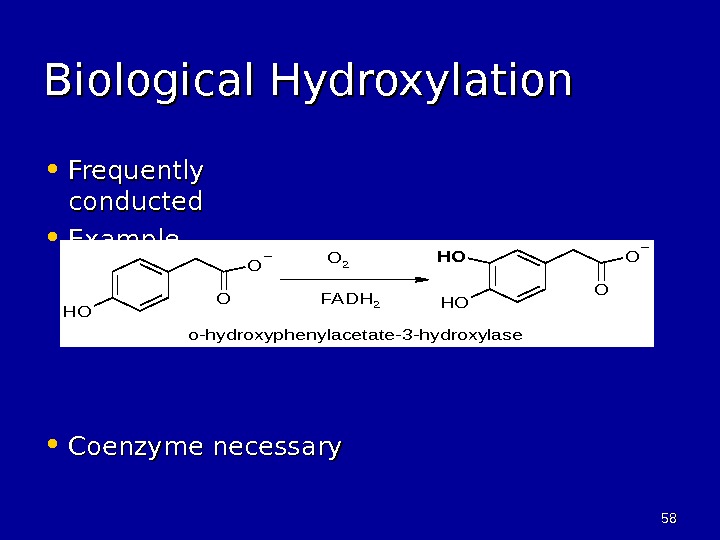
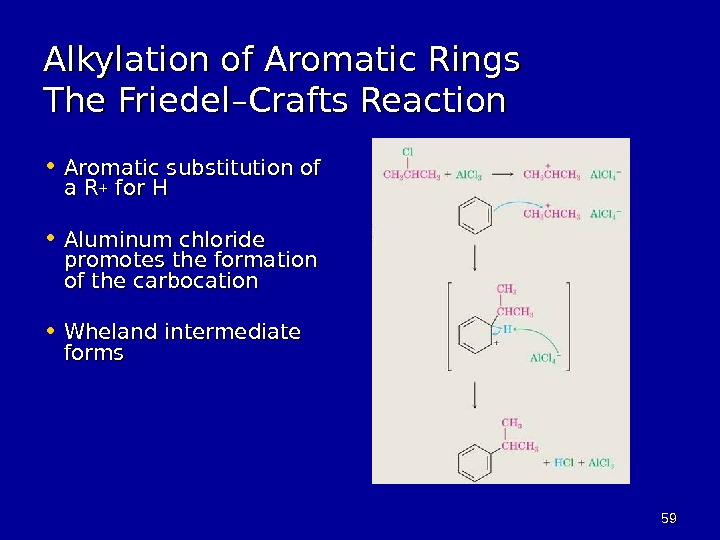
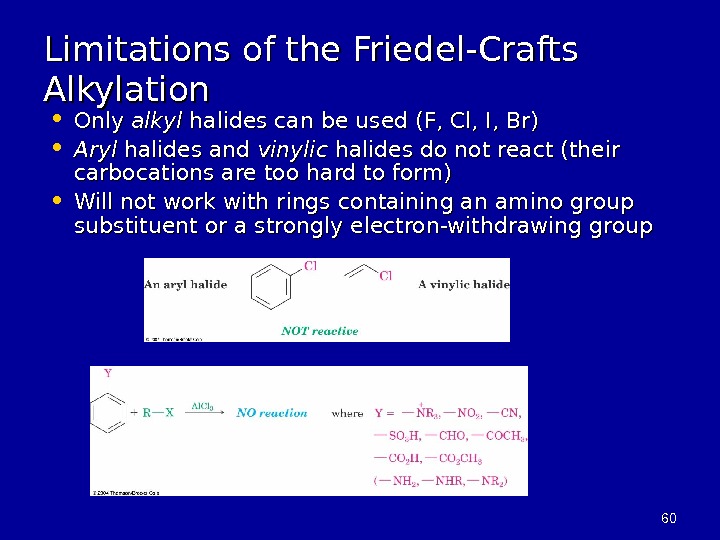
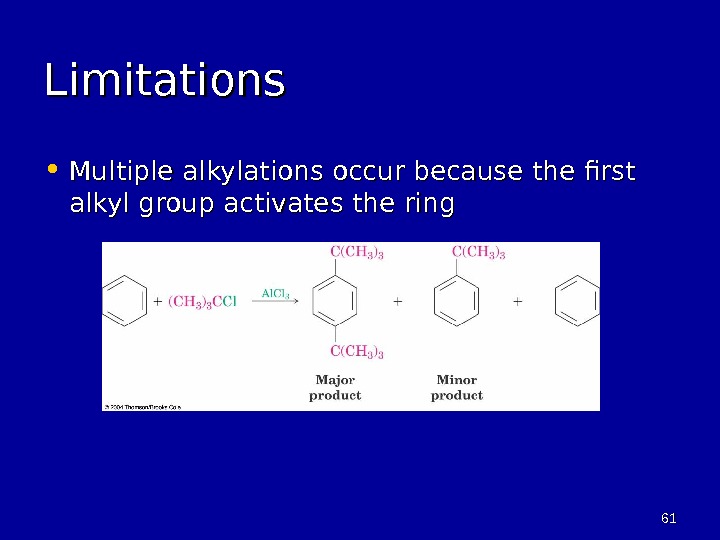
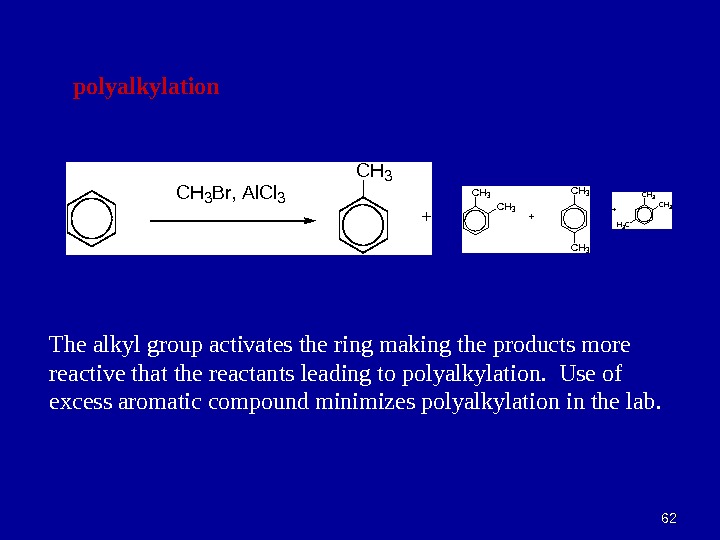
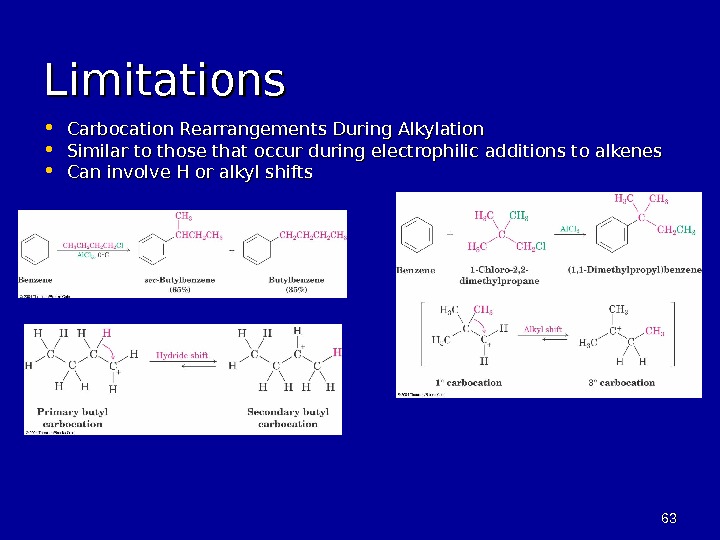


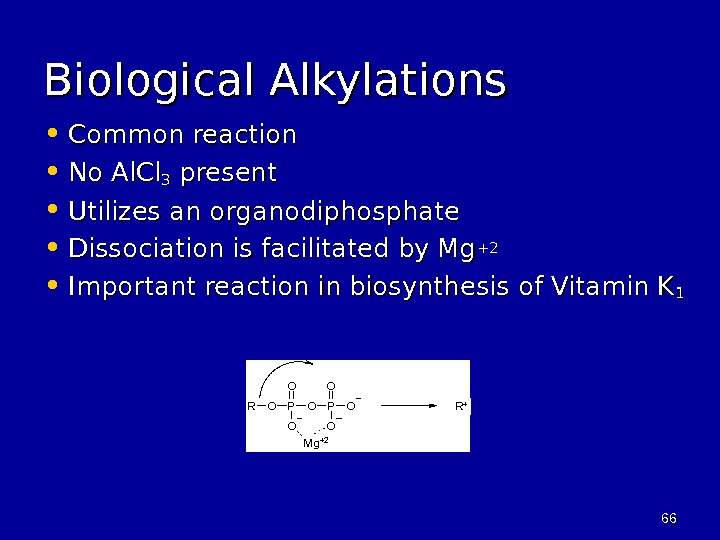
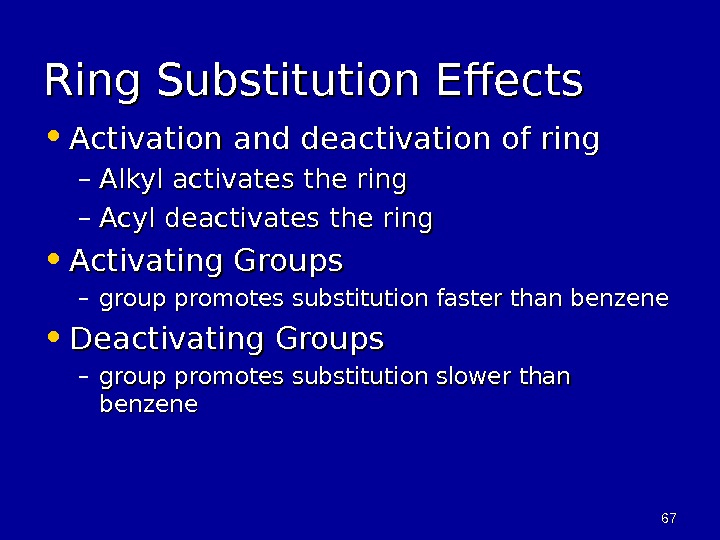

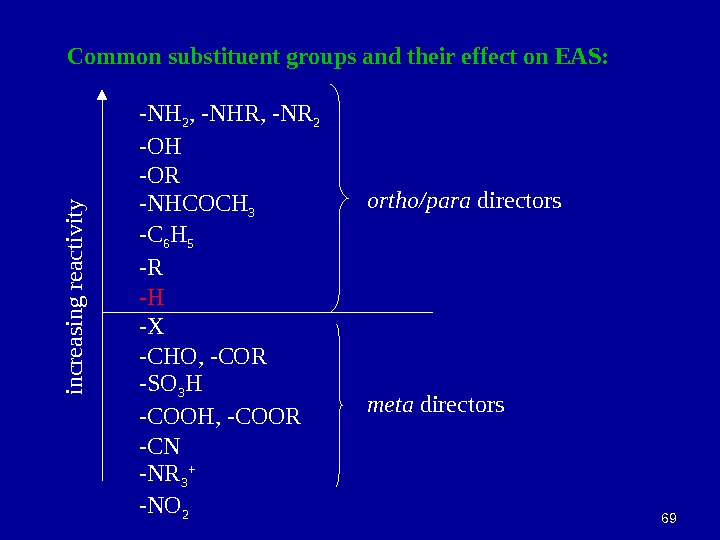

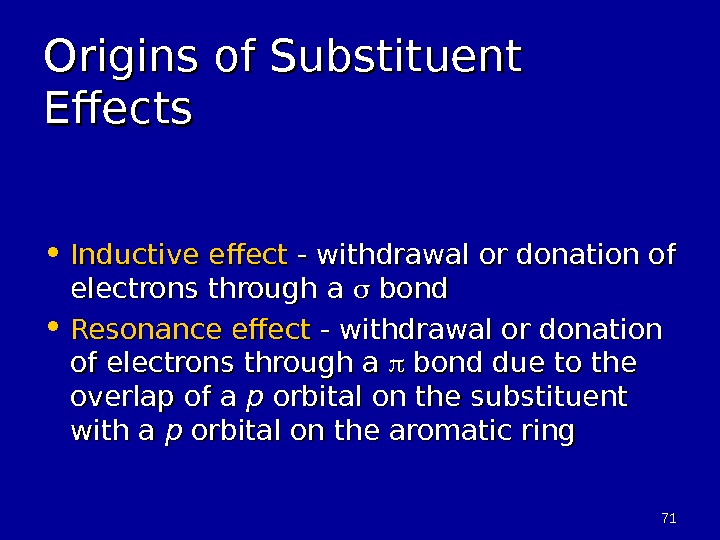

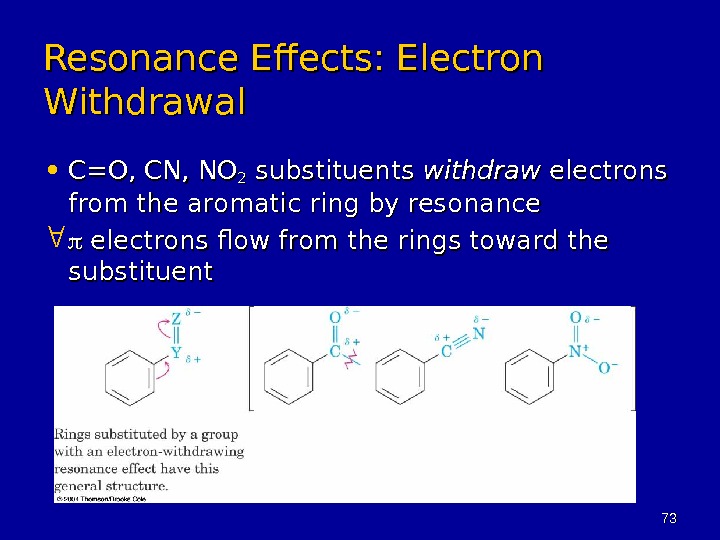

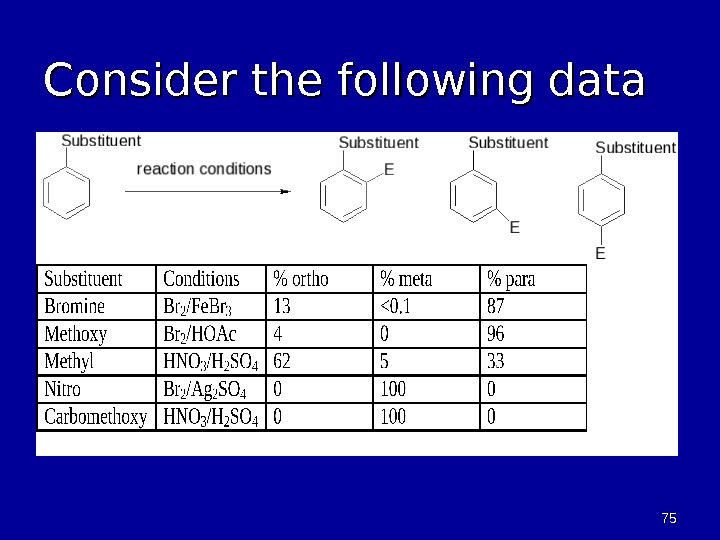
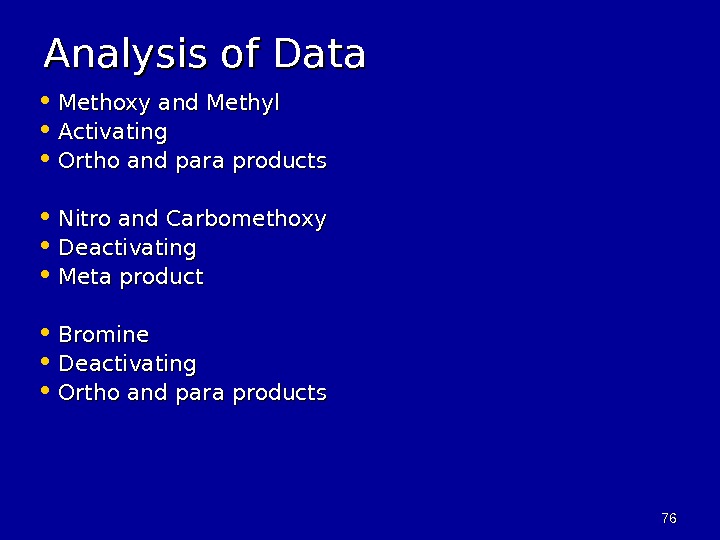
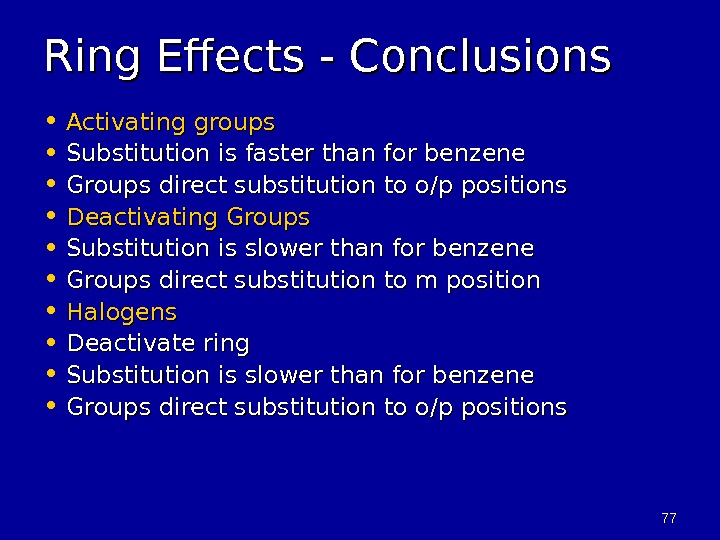
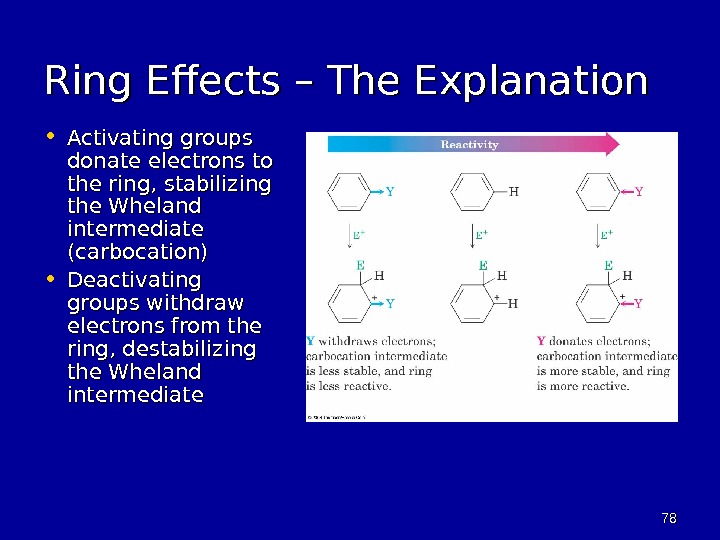
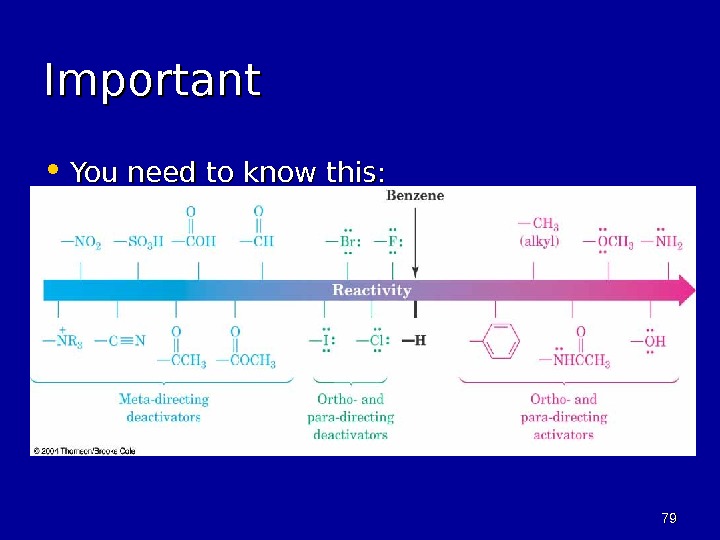
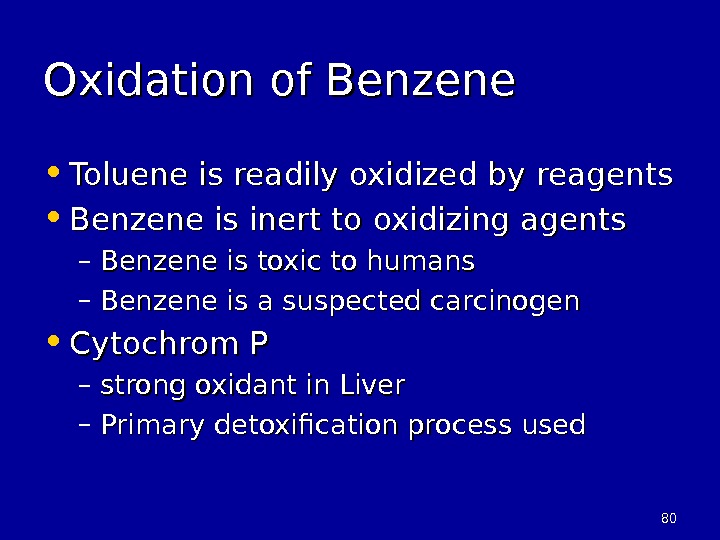
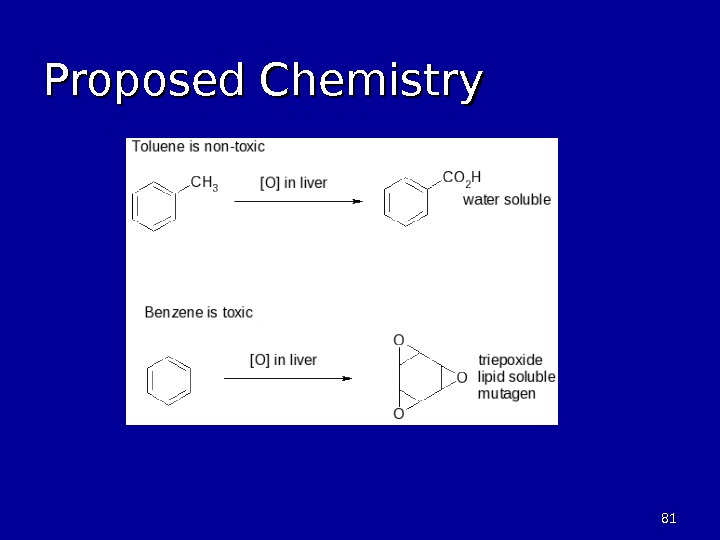
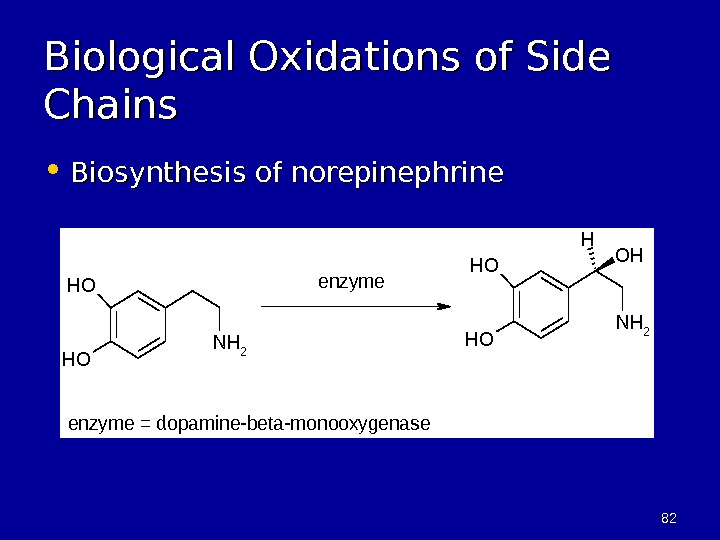
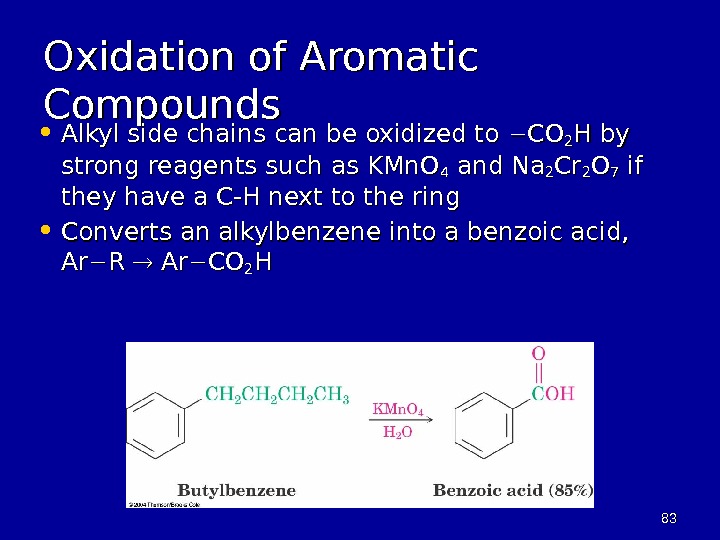

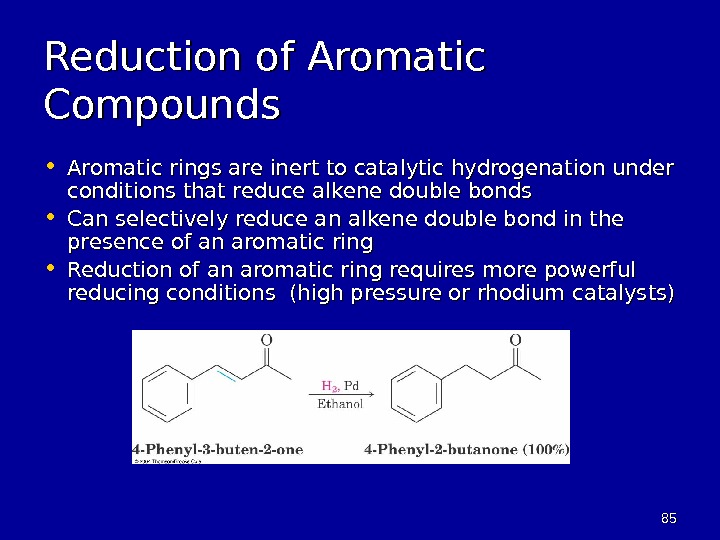
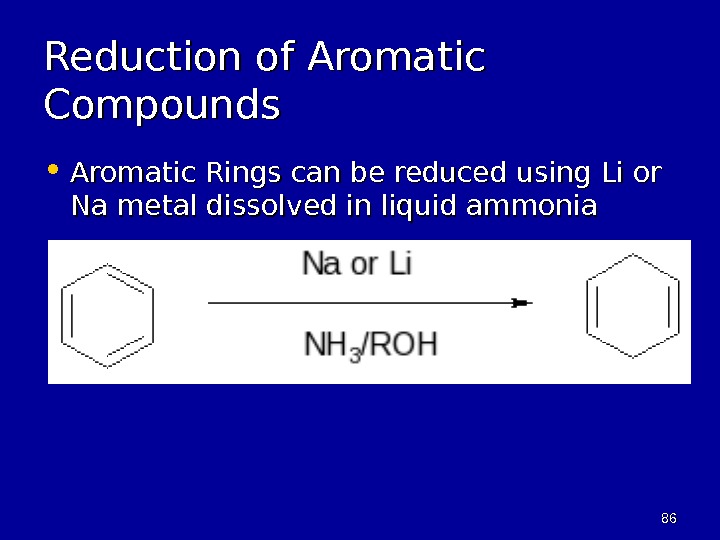

- Размер: 2.6 Mегабайта
- Количество слайдов: 87
Описание презентации Organic Chemistry Aromatic Compounds 22 Arenes : по слайдам
 Organic Chemistry Aromatic Compounds
Organic Chemistry Aromatic Compounds
 22 Arenes : compounds containing both aliphatic and aromatic parts. Alkylbenzenes Alkenylbenzenes Alkynylbenzenes Etc. Emphasis on the effect that one part has on the chemistry of the other half. Reactivity & orientation
22 Arenes : compounds containing both aliphatic and aromatic parts. Alkylbenzenes Alkenylbenzenes Alkynylbenzenes Etc. Emphasis on the effect that one part has on the chemistry of the other half. Reactivity & orientation
 33 Aromatic Hydrocarbons hydrocarbons aliphatic aromatic alkanes alkenes alkynes
33 Aromatic Hydrocarbons hydrocarbons aliphatic aromatic alkanes alkenes alkynes
 44 Aliphatic compounds : open-chain compounds and ring compounds that are chemically similar to open-chain compounds. Alkanes, alkenes, alkynes, dienes, alicyclics, etc. Aromatic compounds : unsaturated ring compounds that are far more stable than they should be and resist the addition reactions typical of unsaturated aliphatic compounds. Benzene and related compounds.
44 Aliphatic compounds : open-chain compounds and ring compounds that are chemically similar to open-chain compounds. Alkanes, alkenes, alkynes, dienes, alicyclics, etc. Aromatic compounds : unsaturated ring compounds that are far more stable than they should be and resist the addition reactions typical of unsaturated aliphatic compounds. Benzene and related compounds.
 55 Nomenclature – common namesbenzenenaphthaleneanthracene phenanthrenebiphenylindene
55 Nomenclature – common namesbenzenenaphthaleneanthracene phenanthrenebiphenylindene
 66 Nomenclature – common names. CH 3 OH NH 2 O O H COOH CH 3 toluene phenol aniline acetophenonestyrene xylenes (ortho, metal, and para) benzoic acid benzaldehyde
66 Nomenclature – common names. CH 3 OH NH 2 O O H COOH CH 3 toluene phenol aniline acetophenonestyrene xylenes (ortho, metal, and para) benzoic acid benzaldehyde
 77 Systematic Nomenclature • Monosubstituted benzenes • Hydrocarbon with benzene a s parent • CC 66 HH 55 Br = bromobenzene • CC 66 HH 55 NONO 2 2 = nitrobenzene • CC 66 HH 55 CHCH 22 CHCH 33 = propylbenzene
77 Systematic Nomenclature • Monosubstituted benzenes • Hydrocarbon with benzene a s parent • CC 66 HH 55 Br = bromobenzene • CC 66 HH 55 NONO 2 2 = nitrobenzene • CC 66 HH 55 CHCH 22 CHCH 33 = propylbenzene
 88 others named as “alkylbenzenes”: C HH 3 C C H 3 C H 2 H 2 CC H 3 H 2 C C H 3 i s o p r o p y l b e n z e n — p r o p y l b e n z e n e i s o b u t y l b e n z e n e C H 2 C H 3 o — d i e t h y l b e n z e n — b u t y l b e n z e n e
88 others named as “alkylbenzenes”: C HH 3 C C H 3 C H 2 H 2 CC H 3 H 2 C C H 3 i s o p r o p y l b e n z e n — p r o p y l b e n z e n e i s o b u t y l b e n z e n e C H 2 C H 3 o — d i e t h y l b e n z e n — b u t y l b e n z e n e
 99 The Phenyl Group • When a benzene ring is a substituent, the term phenyl is used (for C 66 HH 55 )) • You may also see “Ph” or “ ” in place of “C“C 66 HH 55 ”” • ““ Benzyl ” refers to “C 66 HH 55 CHCH 22””
99 The Phenyl Group • When a benzene ring is a substituent, the term phenyl is used (for C 66 HH 55 )) • You may also see “Ph” or “ ” in place of “C“C 66 HH 55 ”” • ““ Benzyl ” refers to “C 66 HH 55 CHCH 22””
 1010 Use of phenyl C 6 H 5 — = “phenyl” C H 2 2 — m e t h y l — 3 — p h e n y l h e p t a n e 1 , 2 — d i p h e n y l e t h a n e do not confuse phenyl (C 6 H 5 -) with benzyl (C 6 H 5 CH 2 -)
1010 Use of phenyl C 6 H 5 — = “phenyl” C H 2 2 — m e t h y l — 3 — p h e n y l h e p t a n e 1 , 2 — d i p h e n y l e t h a n e do not confuse phenyl (C 6 H 5 -) with benzyl (C 6 H 5 CH 2 -)
 1111 Nomenclature: Side Chains • If side chain has 6 carbons – Phenyl alkane
1111 Nomenclature: Side Chains • If side chain has 6 carbons – Phenyl alkane
 1212 Alkenylbenzenes, nomenclature: CH=CH 2 styrene CH 2 CH=CH 2 3 -phenylpropene (allylbenzene) (Z)-1 -phenyl-1 -butene Special name Rest are named as substituted alkenes
1212 Alkenylbenzenes, nomenclature: CH=CH 2 styrene CH 2 CH=CH 2 3 -phenylpropene (allylbenzene) (Z)-1 -phenyl-1 -butene Special name Rest are named as substituted alkenes
 1313 Alkynylbenzenes, nomenclature: C C H p h e n y l a c e t y l e n e 5 — p h e n y l — 2 — h e x y n e p h e n y l e t h y n e
1313 Alkynylbenzenes, nomenclature: C C H p h e n y l a c e t y l e n e 5 — p h e n y l — 2 — h e x y n e p h e n y l e t h y n e
 1414 Alcohols, etc. , nomenclature: CHH 3 COH 1 -phenylethanol phenylethyl alcohol CH 2 OH benzyl alcohol 1 -chloro-2 -phenylethane -phenylethyl chloride CH 2 -Cl cyclohexylbenzene phenylcyclohexane
1414 Alcohols, etc. , nomenclature: CHH 3 COH 1 -phenylethanol phenylethyl alcohol CH 2 OH benzyl alcohol 1 -chloro-2 -phenylethane -phenylethyl chloride CH 2 -Cl cyclohexylbenzene phenylcyclohexane
 1515 Nomenclature Disubstituted Benzene • Relative positions on a benzene ring – ortho- (o) on adjacent carbons (1, 2) – meta- (m) separated by one carbon (1, 3) – para- (p) separated by two carbons (1, 4) • Describes reaction patterns (“occurs at the para position”)
1515 Nomenclature Disubstituted Benzene • Relative positions on a benzene ring – ortho- (o) on adjacent carbons (1, 2) – meta- (m) separated by one carbon (1, 3) – para- (p) separated by two carbons (1, 4) • Describes reaction patterns (“occurs at the para position”)
 1616 Nomenclature More Than Two Substituents • Choose numbers to get lowest possible values • List substituents alphabetically with hyphenated numbers • Common names, such as “toluene” can serve as root name (as in TNT)
1616 Nomenclature More Than Two Substituents • Choose numbers to get lowest possible values • List substituents alphabetically with hyphenated numbers • Common names, such as “toluene” can serve as root name (as in TNT)
 1717 Benzene • Three double bonds • Unreactive towards normal reagents (compare to alkenes) • Very stable • Why? • How can we get benzene to react? • Can we control these reactions?
1717 Benzene • Three double bonds • Unreactive towards normal reagents (compare to alkenes) • Very stable • Why? • How can we get benzene to react? • Can we control these reactions?
 1818 Observations: Reactions of Benzene • Benzene reacts slowly with Br 22 • Product is bromobenzene • Substitution Product • Addition products are not observed.
1818 Observations: Reactions of Benzene • Benzene reacts slowly with Br 22 • Product is bromobenzene • Substitution Product • Addition products are not observed.
 1919 Stability of Benzene • KMn. O 44 – Reacts with alkenes – No reaction with benzene • HCl – Reacts with alkenes – No reaction with benzene • HBr – Reacts with alkenes – No reaction with benzene
1919 Stability of Benzene • KMn. O 44 – Reacts with alkenes – No reaction with benzene • HCl – Reacts with alkenes – No reaction with benzene • HBr – Reacts with alkenes – No reaction with benzene
 2020 Stability of Benzene • Heat of Hydrogenation data-118 k. J/mol -230 k. J/mol -356 k. J/mol (calculated) -206 k. J/mol (actual)
2020 Stability of Benzene • Heat of Hydrogenation data-118 k. J/mol -230 k. J/mol -356 k. J/mol (calculated) -206 k. J/mol (actual)
 2121 Structure of Benzene • C-C bond length • Electrostatic potential • Electron density at C is the same • planar 139 pm. C-C: 154 pm C=C: 134 pm
2121 Structure of Benzene • C-C bond length • Electrostatic potential • Electron density at C is the same • planar 139 pm. C-C: 154 pm C=C: 134 pm
 2222 Structure of Benzene • August Kekule proposed: • 1, 3, 5 -cyclohexatriene structure • Explained single monobromo product
2222 Structure of Benzene • August Kekule proposed: • 1, 3, 5 -cyclohexatriene structure • Explained single monobromo product
 2323 Structure of Benzene • Dibromobenzene
2323 Structure of Benzene • Dibromobenzene
 2424 Structure of Benzene • Issue was resolved by Kekule
2424 Structure of Benzene • Issue was resolved by Kekule
 2525 Structure of Benzene • Explains the observed products • Does not explain – Unreactive nature of benzene – Observation of only substitution products • A triene – As reactive as any alkene – Would give addition products – Not expected to be more stable
2525 Structure of Benzene • Explains the observed products • Does not explain – Unreactive nature of benzene – Observation of only substitution products • A triene – As reactive as any alkene – Would give addition products – Not expected to be more stable
 2626 Structure of Benzene • Resonance Hybrid • Not • Never • -6. 023 X 10 2323 points
2626 Structure of Benzene • Resonance Hybrid • Not • Never • -6. 023 X 10 2323 points
 2727 Stability of Benzene • MO Description • 6 p atomic orbitals combine in cyclic manner • Generate 6 molecular orbitals
2727 Stability of Benzene • MO Description • 6 p atomic orbitals combine in cyclic manner • Generate 6 molecular orbitals
 2828 Key Ideas on Benzene • Unusually stable • heat of hydrogenation 150 k. J/mol lower than a cyclic triene • Planar hexagon: • bond angles are 120° • carbon–carbon bond lengths 139 pm • Undergoes substitution not addition • Resonance hybrid • One more important factor is the number of electrons in the cyclic orbital
2828 Key Ideas on Benzene • Unusually stable • heat of hydrogenation 150 k. J/mol lower than a cyclic triene • Planar hexagon: • bond angles are 120° • carbon–carbon bond lengths 139 pm • Undergoes substitution not addition • Resonance hybrid • One more important factor is the number of electrons in the cyclic orbital
 2929 Aromaticity • E Huckel (1931) – Aromaticity is a property of certain molecules – Chemistry would be similar to benzene – Meet the following criteria • Planar • Mono cyclic system • Conjugated pi system • Contains 4 n + 2 electrons • Can apply rules to variety of compounds and determine aromatic nature. • Led to wild chase to make compounds – Met the rules – Violated the rules
2929 Aromaticity • E Huckel (1931) – Aromaticity is a property of certain molecules – Chemistry would be similar to benzene – Meet the following criteria • Planar • Mono cyclic system • Conjugated pi system • Contains 4 n + 2 electrons • Can apply rules to variety of compounds and determine aromatic nature. • Led to wild chase to make compounds – Met the rules – Violated the rules
 3030 Aromaticity and the 4 nn + 2 Rule • HH uckel’s rule, based on calculations – a planar cyclic molecule with alternating double and single bonds has aromatic stability if it has 4 n+ 2 electrons (n is 0, 1, 2, 3, 4 )) • For n=1: 4 n+2 = 6 • benzene is stable and the electrons are delocalized
3030 Aromaticity and the 4 nn + 2 Rule • HH uckel’s rule, based on calculations – a planar cyclic molecule with alternating double and single bonds has aromatic stability if it has 4 n+ 2 electrons (n is 0, 1, 2, 3, 4 )) • For n=1: 4 n+2 = 6 • benzene is stable and the electrons are delocalized
 3131 Compounds With 4 n Electrons Are Not Aromatic (May be Anti-aromatic) • Planar, cyclic molecules with 4 n electrons are much less stable than expected (anti-aromatic) • They will distort out of plane and behave like ordinary alkenes • 4 — and 8 -electron compounds are not delocalized • Alternating single and double bonds
3131 Compounds With 4 n Electrons Are Not Aromatic (May be Anti-aromatic) • Planar, cyclic molecules with 4 n electrons are much less stable than expected (anti-aromatic) • They will distort out of plane and behave like ordinary alkenes • 4 — and 8 -electron compounds are not delocalized • Alternating single and double bonds
 3232 Cyclobutadiene • Cyclobutadiene is so unstable that it dimerizes by a self-Diels-Alder reaction at low temperature
3232 Cyclobutadiene • Cyclobutadiene is so unstable that it dimerizes by a self-Diels-Alder reaction at low temperature
 3333 Cyclooctatetraene • Cyclooctatetraene has four double bonds • Behaves as if it were 4 separate alkenes • It reacts with Br 22 , KMn. O 44 , and HCl • Non-planar structure c y c l o o c t a t e t r a e n e
3333 Cyclooctatetraene • Cyclooctatetraene has four double bonds • Behaves as if it were 4 separate alkenes • It reacts with Br 22 , KMn. O 44 , and HCl • Non-planar structure c y c l o o c t a t e t r a e n e
 3434 Aromatic Heterocycles • Heterocyclic compounds contain elements other than carbon in a ring, such as N, S, O, P • There are many heterocyclic aromatic compounds • Cyclic compounds that contain only carbon are called carbocycles • Nomenclature is specialized • Four are important in biological chemistry
3434 Aromatic Heterocycles • Heterocyclic compounds contain elements other than carbon in a ring, such as N, S, O, P • There are many heterocyclic aromatic compounds • Cyclic compounds that contain only carbon are called carbocycles • Nomenclature is specialized • Four are important in biological chemistry
 3535 Pyridine • A six-membered heterocycle with a nitrogen atom in its ring electron structure resembles benzene (6 electrons) • The nitrogen lone pair electrons are not part of the aromatic system (perpendicular orbital) • Pyridine is a relatively weak base compared to normal amines but protonation does not affect aromaticity
3535 Pyridine • A six-membered heterocycle with a nitrogen atom in its ring electron structure resembles benzene (6 electrons) • The nitrogen lone pair electrons are not part of the aromatic system (perpendicular orbital) • Pyridine is a relatively weak base compared to normal amines but protonation does not affect aromaticity
 3636 Pyrrole • A five-membered heterocycle with one nitrogen • Four spsp 22 -hybridized carbons with 4 pp orbitals perpendicular to the ring and 4 p electrons • Nitrogen atom is spsp 22 -hybridized, and lone pair of electrons occupies a pp orbital (6 electrons) • Since lone pair electrons are in the aromatic ring, protonation destroys aromaticity, making pyrrole a very weak base
3636 Pyrrole • A five-membered heterocycle with one nitrogen • Four spsp 22 -hybridized carbons with 4 pp orbitals perpendicular to the ring and 4 p electrons • Nitrogen atom is spsp 22 -hybridized, and lone pair of electrons occupies a pp orbital (6 electrons) • Since lone pair electrons are in the aromatic ring, protonation destroys aromaticity, making pyrrole a very weak base
 3737 Pyrimidine • Similar to benzene • 3 pi bonds • 4 n + 2 pi electrons • aromatic. N N
3737 Pyrimidine • Similar to benzene • 3 pi bonds • 4 n + 2 pi electrons • aromatic. N N
 3838 Imidazole • Similar to pyrrole • Pair of non-bonding electrons on N used • 4 n + 2 pi electrons. NH N
3838 Imidazole • Similar to pyrrole • Pair of non-bonding electrons on N used • 4 n + 2 pi electrons. NH N
 3939 Thiophene and Furan • Non-bonding electrons are used • 4 n + 2 pi electrons. SO
3939 Thiophene and Furan • Non-bonding electrons are used • 4 n + 2 pi electrons. SO
 4040 Substitution Reactions of Benzene • Benzene is aromatic: a cyclic conjugated compound with 6 electrons • Reaction with E ++ Leads to Substitution • Aromaticity of Benzene is retained • EE ++ = Br, Cl, NO 22 , SO 33 H, Alkyl, Acyl, etc
4040 Substitution Reactions of Benzene • Benzene is aromatic: a cyclic conjugated compound with 6 electrons • Reaction with E ++ Leads to Substitution • Aromaticity of Benzene is retained • EE ++ = Br, Cl, NO 22 , SO 33 H, Alkyl, Acyl, etc
 4141 Aromatic Substitutions • The proposed mechanism for the reaction of benzene with electrophiles involves a cationic intermediate • first proposed by G. W. Wheland of the University of Chicago • Often called the Wheland intermediate
4141 Aromatic Substitutions • The proposed mechanism for the reaction of benzene with electrophiles involves a cationic intermediate • first proposed by G. W. Wheland of the University of Chicago • Often called the Wheland intermediate
 4242 Chemistry of the Intermediate • Loss of a proton leads to rearomatization and substitution • Loss of E ++ returns to starting material. E H HH H H E + -E+-H+
4242 Chemistry of the Intermediate • Loss of a proton leads to rearomatization and substitution • Loss of E ++ returns to starting material. E H HH H H E + -E+-H+
 4343 Halogenation • Add Cl, Br, and I • Must use Lewis acid catalyst • F is too reactive and gives very low yields Cl Br ICl 2 /Fe. Cl 3 Br 2 /Fe. Br 3 I 2 /Cu. Cl
4343 Halogenation • Add Cl, Br, and I • Must use Lewis acid catalyst • F is too reactive and gives very low yields Cl Br ICl 2 /Fe. Cl 3 Br 2 /Fe. Br 3 I 2 /Cu. Cl
 4444 Biological Halogenation • Accomplished during biosynthesis of • thyroxine. OH NH 3 H I I CO 2 — + tyrosine thyroid peroxidase CO 2 — +
4444 Biological Halogenation • Accomplished during biosynthesis of • thyroxine. OH NH 3 H I I CO 2 — + tyrosine thyroid peroxidase CO 2 — +
 4545 Aromatic Nitration • The combination of nitric acid and sulfuric acid produces NONO 22 ++ (nitronium ion) • The reaction with benzene produces nitrobenzene
4545 Aromatic Nitration • The combination of nitric acid and sulfuric acid produces NONO 22 ++ (nitronium ion) • The reaction with benzene produces nitrobenzene
![4646 Nitrobenzenes: Precursors to Anilines • Nitric acid destroys alkenes through [O] • In sulfuric 4646 Nitrobenzenes: Precursors to Anilines • Nitric acid destroys alkenes through [O] • In sulfuric](/docs//org_chem_arenes_final_images/org_chem_arenes_final_45.jpg) 4646 Nitrobenzenes: Precursors to Anilines • Nitric acid destroys alkenes through [O] • In sulfuric acid reacts with benzene giving nitrobenzene • Nitrobenzene may be reduced to aniline • Aniline useful precursors to many industrially important organic compounds
4646 Nitrobenzenes: Precursors to Anilines • Nitric acid destroys alkenes through [O] • In sulfuric acid reacts with benzene giving nitrobenzene • Nitrobenzene may be reduced to aniline • Aniline useful precursors to many industrially important organic compounds
 4747 Important Anilines
4747 Important Anilines
 4848 Aromatic Dyes • William Henry Perkin • Age 17 (1856) • Undergraduate student in medicine • Reacted aniline with potassium dichromate • Tarry mess
4848 Aromatic Dyes • William Henry Perkin • Age 17 (1856) • Undergraduate student in medicine • Reacted aniline with potassium dichromate • Tarry mess
 4949 Aromatic Dyes • Isolated • Mauve — a purple color • Dyed white cloth • Patented material and process • First chemical company
4949 Aromatic Dyes • Isolated • Mauve — a purple color • Dyed white cloth • Patented material and process • First chemical company
 5050 Mauveines -> 1994 !
5050 Mauveines -> 1994 !
 5151 Some Aniline Chemistry • Anilines readily react with nitrous acid • Diazonium salts – Coupling reaction giving an azo compound • Dyes and sulfa drugs
5151 Some Aniline Chemistry • Anilines readily react with nitrous acid • Diazonium salts – Coupling reaction giving an azo compound • Dyes and sulfa drugs
 5252 Aniline Chemistry. H I CN OH N 2+ H 3 PO 3 N 2+ Na. I N 2+ KCN/Cu. CN N 2+ Cu 2 O/Cu(NO 3)
5252 Aniline Chemistry. H I CN OH N 2+ H 3 PO 3 N 2+ Na. I N 2+ KCN/Cu. CN N 2+ Cu 2 O/Cu(NO 3)
 5353 How do we make sulfuric acid? • HH 22 SOSO 44 – least expensive manufactured chemical • S (mined pure) + O 22 SO 33 • SOSO 33 + H 22 O H 22 SOSO 44 • Continue adding SO 33 gives • Fuming sulfuric acid: H 22 SOSO 44 / SO
5353 How do we make sulfuric acid? • HH 22 SOSO 44 – least expensive manufactured chemical • S (mined pure) + O 22 SO 33 • SOSO 33 + H 22 O H 22 SOSO 44 • Continue adding SO 33 gives • Fuming sulfuric acid: H 22 SOSO 44 / SO
 5454 Aromatic Sulfonation • Substitution of H by SO 33 (sulfonation) • Reaction with a mixture of sulfuric acid and SO 33 • Reactive species is sulfur trioxide or its conjugate acid • Reaction occurs via Wheland intermediate and is reversible
5454 Aromatic Sulfonation • Substitution of H by SO 33 (sulfonation) • Reaction with a mixture of sulfuric acid and SO 33 • Reactive species is sulfur trioxide or its conjugate acid • Reaction occurs via Wheland intermediate and is reversible
 5555 Benzene Sulfonic Acid • Manufacture of Ion Exchange Resins – Water softening – Water purification – Environmental restoration (removal of toxic metal ions)
5555 Benzene Sulfonic Acid • Manufacture of Ion Exchange Resins – Water softening – Water purification – Environmental restoration (removal of toxic metal ions)
 5656 Benzene Sulfonic Acid • Starting material for Sulfa Drugs • First useful antibiotics. S O O NH
5656 Benzene Sulfonic Acid • Starting material for Sulfa Drugs • First useful antibiotics. S O O NH
 5757 Hydroxylation • Direct hydroxylation is difficult in lab • Indirect method uses sulfonic acid. S O O OHOH 1. Na. OH 2. 300 o. C phenol
5757 Hydroxylation • Direct hydroxylation is difficult in lab • Indirect method uses sulfonic acid. S O O OHOH 1. Na. OH 2. 300 o. C phenol
 5858 Biological Hydroxylation • Frequently conducted • Example, • Coenzyme necessary. O O OH OHO 2 o-hydroxyphenylacetate-3 -hydroxylase FADH
5858 Biological Hydroxylation • Frequently conducted • Example, • Coenzyme necessary. O O OH OHO 2 o-hydroxyphenylacetate-3 -hydroxylase FADH
 5959 Alkylation of Aromatic Rings The Friedel–Crafts Reaction • Aromatic substitution of a Ra R ++ for H • Aluminum chloride promotes the formation of the carbocation • Wheland intermediate forms
5959 Alkylation of Aromatic Rings The Friedel–Crafts Reaction • Aromatic substitution of a Ra R ++ for H • Aluminum chloride promotes the formation of the carbocation • Wheland intermediate forms
 6060 Limitations of the Friedel-Crafts Alkylation • Only alkyl halides can be used (F, Cl, I, Br) • Aryl halides and vinylic halides do not react (their carbocations are too hard to form) • Will not work with rings containing an amino group substituent or a strongly electron-withdrawing group
6060 Limitations of the Friedel-Crafts Alkylation • Only alkyl halides can be used (F, Cl, I, Br) • Aryl halides and vinylic halides do not react (their carbocations are too hard to form) • Will not work with rings containing an amino group substituent or a strongly electron-withdrawing group
 6161 Limitations • Multiple alkylations occur because the first alkyl group activates the ring
6161 Limitations • Multiple alkylations occur because the first alkyl group activates the ring
 6262 polyalkylation C H 3 B r , A l C l 3 +CH 3 + C H 3 H 3 C+ The alkyl group activates the ring making the products more reactive that the reactants leading to polyalkylation. Use of excess aromatic compound minimizes polyalkylation in the lab.
6262 polyalkylation C H 3 B r , A l C l 3 +CH 3 + C H 3 H 3 C+ The alkyl group activates the ring making the products more reactive that the reactants leading to polyalkylation. Use of excess aromatic compound minimizes polyalkylation in the lab.
 6363 Limitations • Carbocation Rearrangements During Alkylation • Similar to those that occur during electrophilic additions to alkenes • Can involve H or alkyl shifts
6363 Limitations • Carbocation Rearrangements During Alkylation • Similar to those that occur during electrophilic additions to alkenes • Can involve H or alkyl shifts
 6464 Related Reactions • Chloromethylation
6464 Related Reactions • Chloromethylation
 6565 Related Reaction • Acylation of Aromatic Rings • Reaction of an acid chloride (RCOCl) with an aromatic ring in the presence of Al. Cl 3 3 introduces the acyl group , , COR • Benzene with acetyl chloride yields acetophenone • Acyl group deactivates ring • Reaction stops after one group is added
6565 Related Reaction • Acylation of Aromatic Rings • Reaction of an acid chloride (RCOCl) with an aromatic ring in the presence of Al. Cl 3 3 introduces the acyl group , , COR • Benzene with acetyl chloride yields acetophenone • Acyl group deactivates ring • Reaction stops after one group is added
 6666 Biological Alkylations • Common reaction • No Al. Cl 33 present • Utilizes an organodiphosphate • Dissociation is facilitated by Mg +2+2 • Important reaction in biosynthesis of Vitamin K 11 OR P O OOO O Mg +2 R +
6666 Biological Alkylations • Common reaction • No Al. Cl 33 present • Utilizes an organodiphosphate • Dissociation is facilitated by Mg +2+2 • Important reaction in biosynthesis of Vitamin K 11 OR P O OOO O Mg +2 R +
 6767 Ring Substitution Effects • Activation and deactivation of ring – Alkyl activates the ring – Acyl deactivates the ring • Activating Groups – group promotes substitution faster than benzene • Deactivating Groups – group promotes substitution slower than benzene
6767 Ring Substitution Effects • Activation and deactivation of ring – Alkyl activates the ring – Acyl deactivates the ring • Activating Groups – group promotes substitution faster than benzene • Deactivating Groups – group promotes substitution slower than benzene
 6868 Activating and Deactivating Groups • Activating groups – electron donating groups – stabilizes the carbocation intermediate – activates through induction or resonance • Deactivating groups – electron withdrawing groups – destabilizes the carbocation intermediate – deactivates through induction or resonance
6868 Activating and Deactivating Groups • Activating groups – electron donating groups – stabilizes the carbocation intermediate – activates through induction or resonance • Deactivating groups – electron withdrawing groups – destabilizes the carbocation intermediate – deactivates through induction or resonance
 6969 Common substituent groups and their effect on EAS: -NH 2 , -NHR, -NR 2 -OH -OR -NHCOCH 3 -C 6 H 5 -R -H -X -CHO, -COR -SO 3 H -COOH, -COOR -CN -NR 3 + -NO 2 in c re a sin g re a c tiv ity ortho/para directors meta directors
6969 Common substituent groups and their effect on EAS: -NH 2 , -NHR, -NR 2 -OH -OR -NHCOCH 3 -C 6 H 5 -R -H -X -CHO, -COR -SO 3 H -COOH, -COOR -CN -NR 3 + -NO 2 in c re a sin g re a c tiv ity ortho/para directors meta directors
 7070 Activating and Deactivating Groups
7070 Activating and Deactivating Groups
 7171 Origins of Substituent Effects • Inductive effect — withdrawal or donation of electrons through a bond • Resonance effect — withdrawal or donation of electrons through a bond due to the overlap of a pp orbital on the substituent with a pp orbital on the aromatic ring
7171 Origins of Substituent Effects • Inductive effect — withdrawal or donation of electrons through a bond • Resonance effect — withdrawal or donation of electrons through a bond due to the overlap of a pp orbital on the substituent with a pp orbital on the aromatic ring
 7272 Inductive Effects • Controlled by electronegativity and the polarity of bonds in functional groups • Halogens, C=O, CN, and NO 22 withdraw electrons through bond connected to ring • Alkyl groups donate electrons through bond
7272 Inductive Effects • Controlled by electronegativity and the polarity of bonds in functional groups • Halogens, C=O, CN, and NO 22 withdraw electrons through bond connected to ring • Alkyl groups donate electrons through bond
 7373 Resonance Effects: Electron Withdrawal • C=O, CN, NO 22 substituents withdraw electrons from the aromatic ring by resonance electrons flow from the rings toward the substituent
7373 Resonance Effects: Electron Withdrawal • C=O, CN, NO 22 substituents withdraw electrons from the aromatic ring by resonance electrons flow from the rings toward the substituent
 7474 Resonance Effects: Electron Donation • Halogen, OH, alkoxyl (OR), and amino substituents donate electrons through resonance • electrons flow from into the ring
7474 Resonance Effects: Electron Donation • Halogen, OH, alkoxyl (OR), and amino substituents donate electrons through resonance • electrons flow from into the ring
 7575 Consider the following data
7575 Consider the following data
 7676 Analysis of Data • Methoxy and Methyl • Activating • Ortho and para products • Nitro and Carbomethoxy • Deactivating • Meta product • Bromine • Deactivating • Ortho and para products
7676 Analysis of Data • Methoxy and Methyl • Activating • Ortho and para products • Nitro and Carbomethoxy • Deactivating • Meta product • Bromine • Deactivating • Ortho and para products
 7777 Ring Effects — Conclusions • Activating groups • Substitution is faster than for benzene • Groups direct substitution to o/p positions • Deactivating Groups • Substitution is slower than for benzene • Groups direct substitution to m position • Halogens • Deactivate ring • Substitution is slower than for benzene • Groups direct substitution to o/p positions
7777 Ring Effects — Conclusions • Activating groups • Substitution is faster than for benzene • Groups direct substitution to o/p positions • Deactivating Groups • Substitution is slower than for benzene • Groups direct substitution to m position • Halogens • Deactivate ring • Substitution is slower than for benzene • Groups direct substitution to o/p positions
 7878 Ring Effects – The Explanation • Activating groups donate electrons to the ring , stabilizing the Wheland intermediate (carbocation) • Deactivating groups withdraw electrons from the ring, destabilizing the Wheland intermediate
7878 Ring Effects – The Explanation • Activating groups donate electrons to the ring , stabilizing the Wheland intermediate (carbocation) • Deactivating groups withdraw electrons from the ring, destabilizing the Wheland intermediate
 7979 Important • You need to know this:
7979 Important • You need to know this:
 8080 Oxidation of Benzene • Toluene is readily oxidized by reagents • Benzene is inert to oxidizing agents – Benzene is toxic to humans – Benzene is a suspected carcinogen • Cytochrom P – strong oxidant in Liver – Primary detoxification process used
8080 Oxidation of Benzene • Toluene is readily oxidized by reagents • Benzene is inert to oxidizing agents – Benzene is toxic to humans – Benzene is a suspected carcinogen • Cytochrom P – strong oxidant in Liver – Primary detoxification process used
 8181 Proposed Chemistry
8181 Proposed Chemistry
 8282 Biological Oxidations of Side Chains • Biosynthesis of norepinephrine. OH OH NH 2 OH H enzyme = dopamine-beta-monooxygenase
8282 Biological Oxidations of Side Chains • Biosynthesis of norepinephrine. OH OH NH 2 OH H enzyme = dopamine-beta-monooxygenase
 8383 Oxidation of Aromatic Compounds • Alkyl side chains can be oxidized to COCO 22 H by strong reagents such as KMn. O 44 and Na 22 Cr. Cr 22 OO 77 if if they have a C-H next to the ring • Converts an alkylbenzene into a benzoic acid, Ar. Ar R R Ar Ar COCO 22 HH
8383 Oxidation of Aromatic Compounds • Alkyl side chains can be oxidized to COCO 22 H by strong reagents such as KMn. O 44 and Na 22 Cr. Cr 22 OO 77 if if they have a C-H next to the ring • Converts an alkylbenzene into a benzoic acid, Ar. Ar R R Ar Ar COCO 22 HH
 8484 Bromination of Alkylbenzene Side Chains • Reaction of an alkylbenzene with NN -bromo-succinimide (NBS) and benzoyl peroxide (radical initiator) introduces Br into the side chain
8484 Bromination of Alkylbenzene Side Chains • Reaction of an alkylbenzene with NN -bromo-succinimide (NBS) and benzoyl peroxide (radical initiator) introduces Br into the side chain
 8585 Reduction of Aromatic Compounds • Aromatic rings are inert to catalytic hydrogenation under conditions that reduce alkene double bonds • Can selectively reduce an alkene double bond in the presence of an aromatic ring • Reduction of an aromatic ring requires more powerful reducing conditions (high pressure or rhodium catalysts)
8585 Reduction of Aromatic Compounds • Aromatic rings are inert to catalytic hydrogenation under conditions that reduce alkene double bonds • Can selectively reduce an alkene double bond in the presence of an aromatic ring • Reduction of an aromatic ring requires more powerful reducing conditions (high pressure or rhodium catalysts)
 8686 Reduction of Aromatic Compounds • Aromatic Rings can be reduced using Li or Na metal dissolved in liquid ammonia
8686 Reduction of Aromatic Compounds • Aromatic Rings can be reduced using Li or Na metal dissolved in liquid ammonia
 8787 Reduction of Aryl Alkyl Ketones • Aromatic ring activates neighboring carbonyl group toward reduction • Ketone is converted into an alkylbenzene by catalytic hydrogenation over Pd catalyst
8787 Reduction of Aryl Alkyl Ketones • Aromatic ring activates neighboring carbonyl group toward reduction • Ketone is converted into an alkylbenzene by catalytic hydrogenation over Pd catalyst

